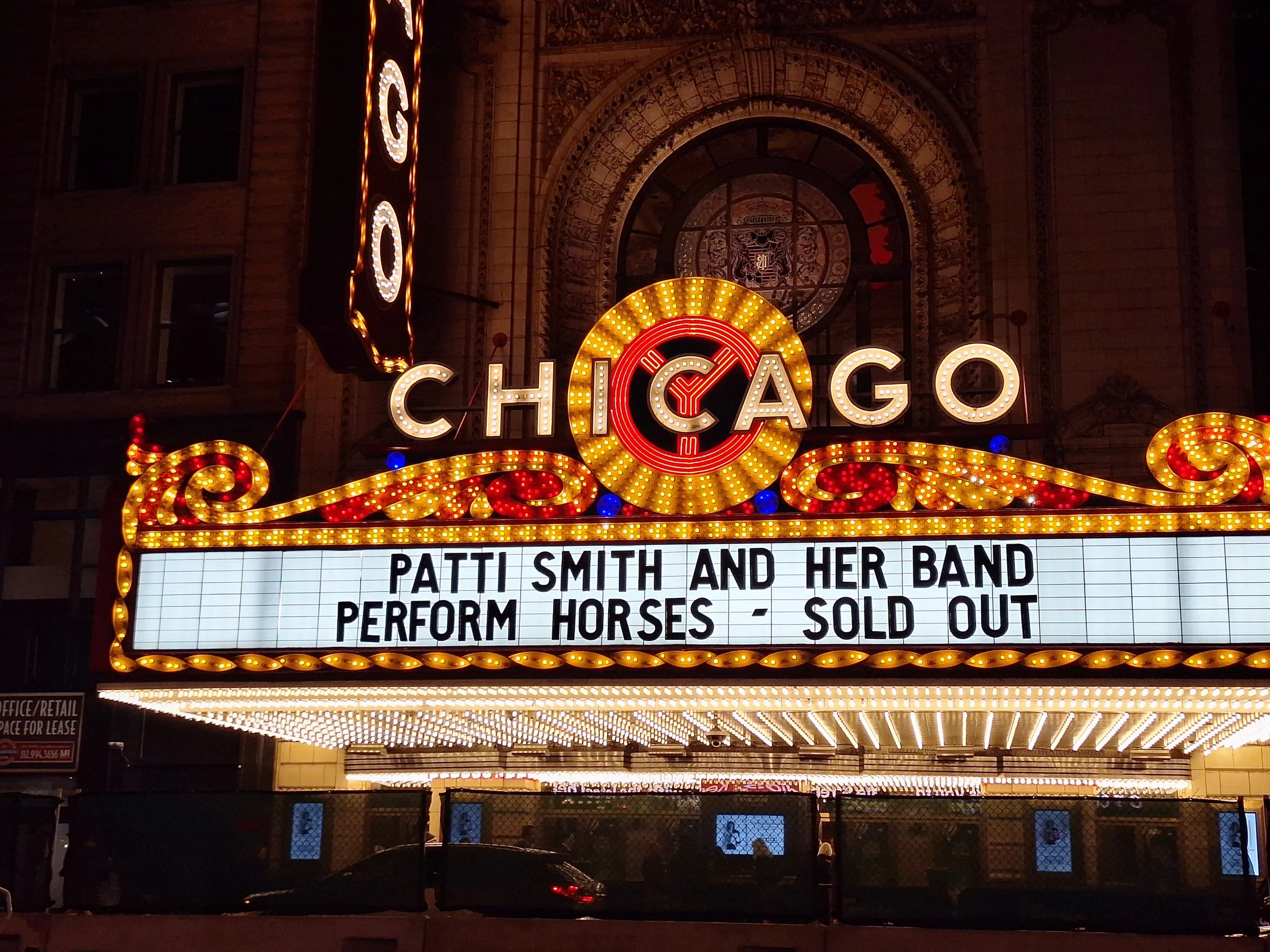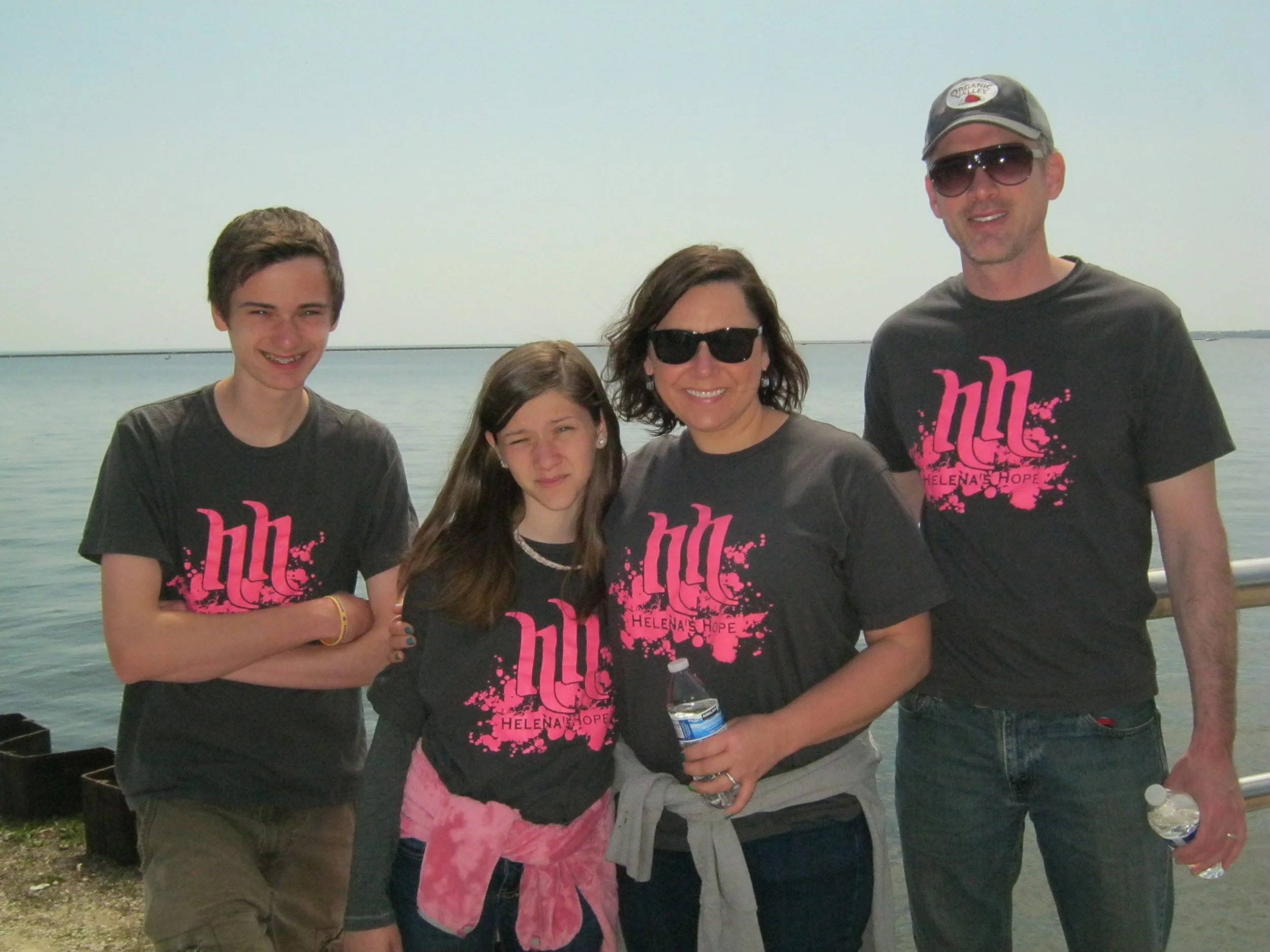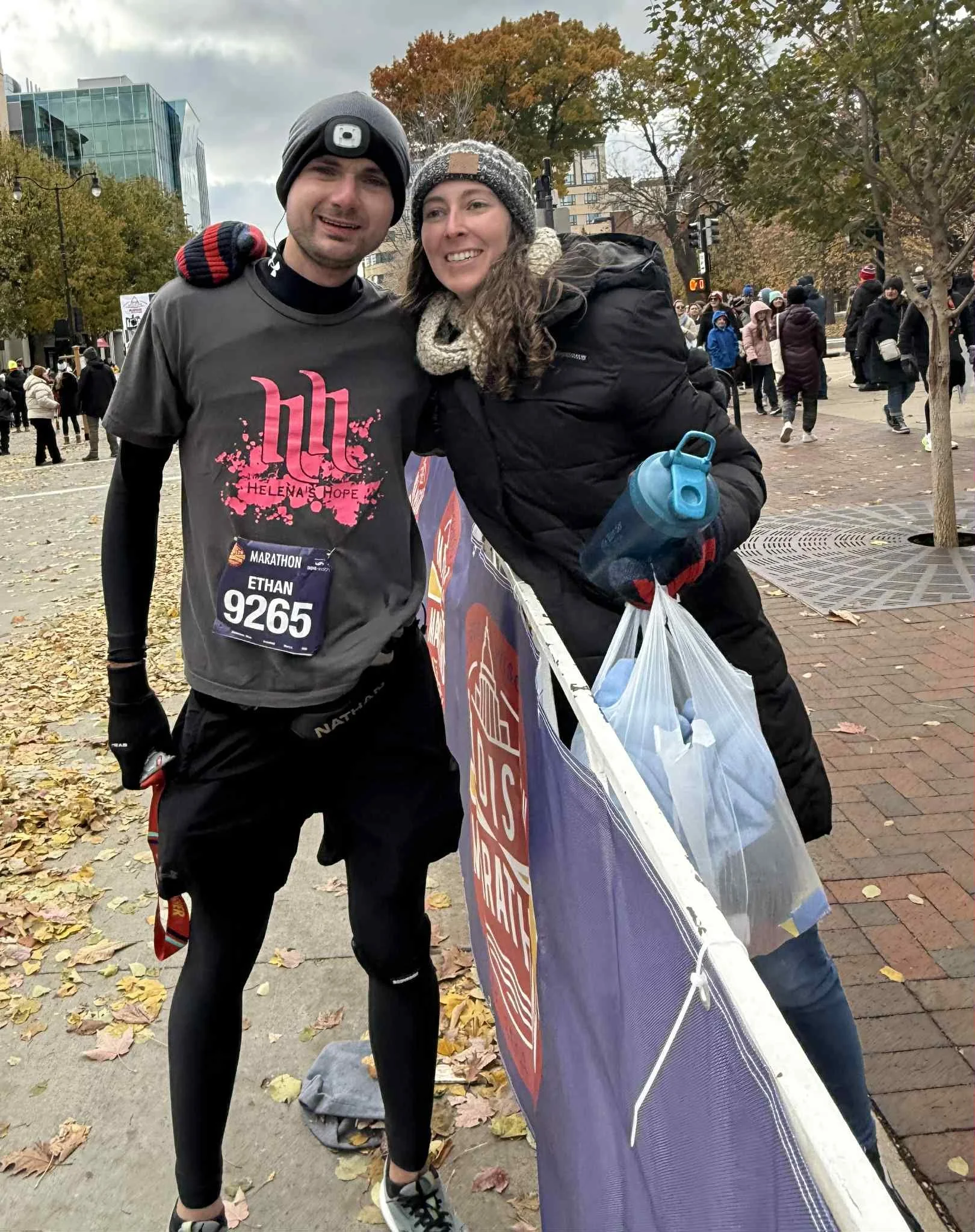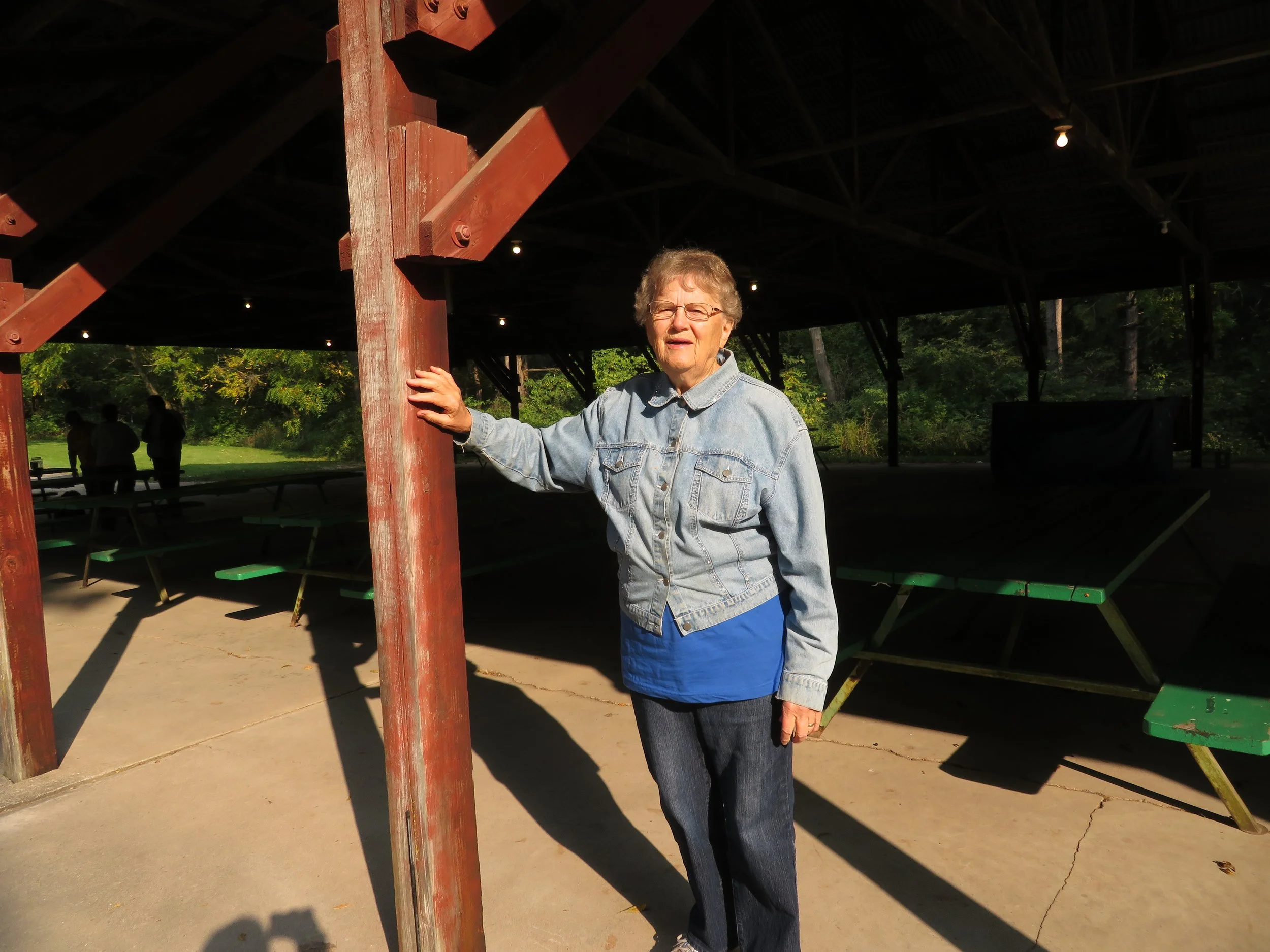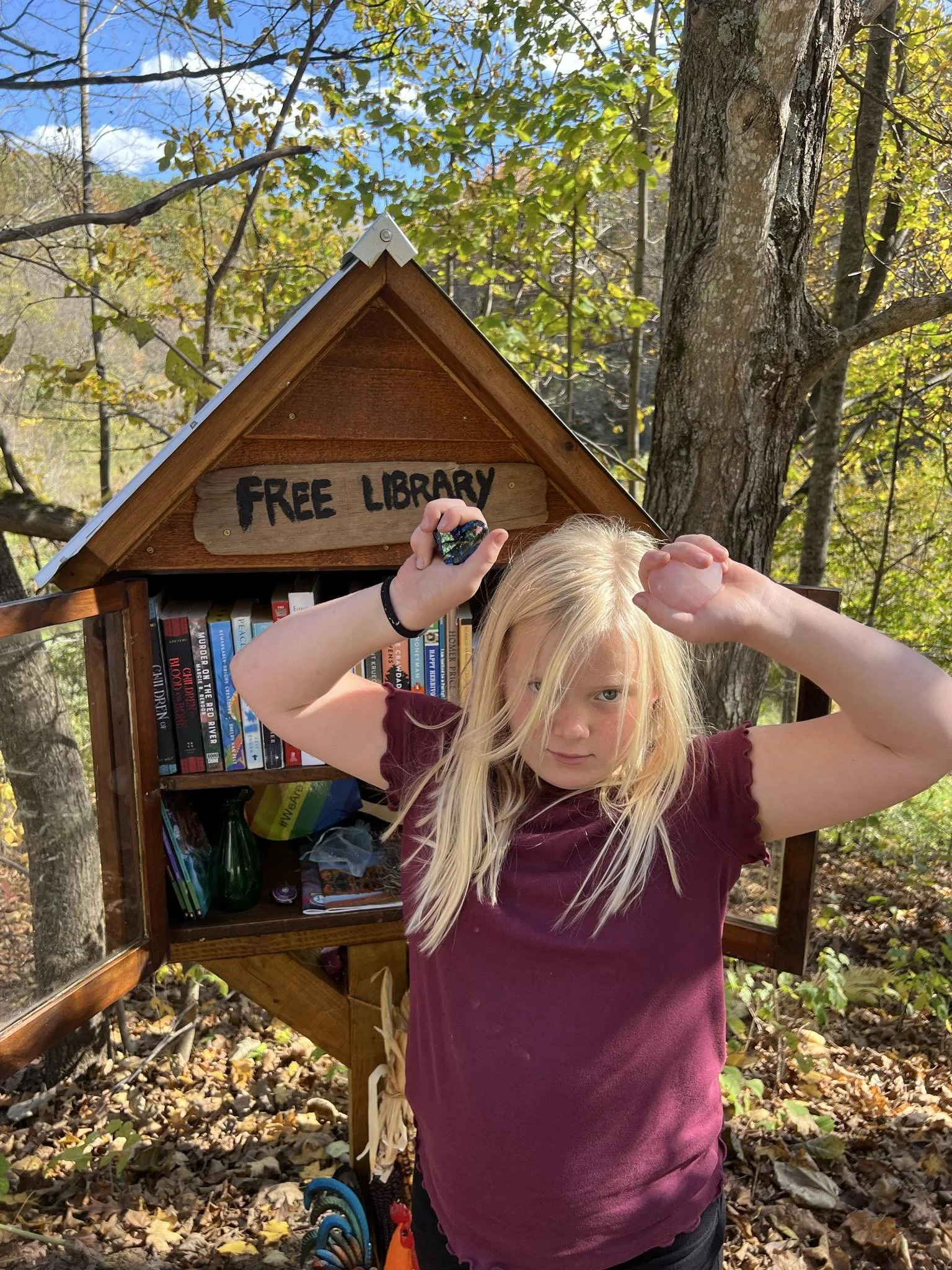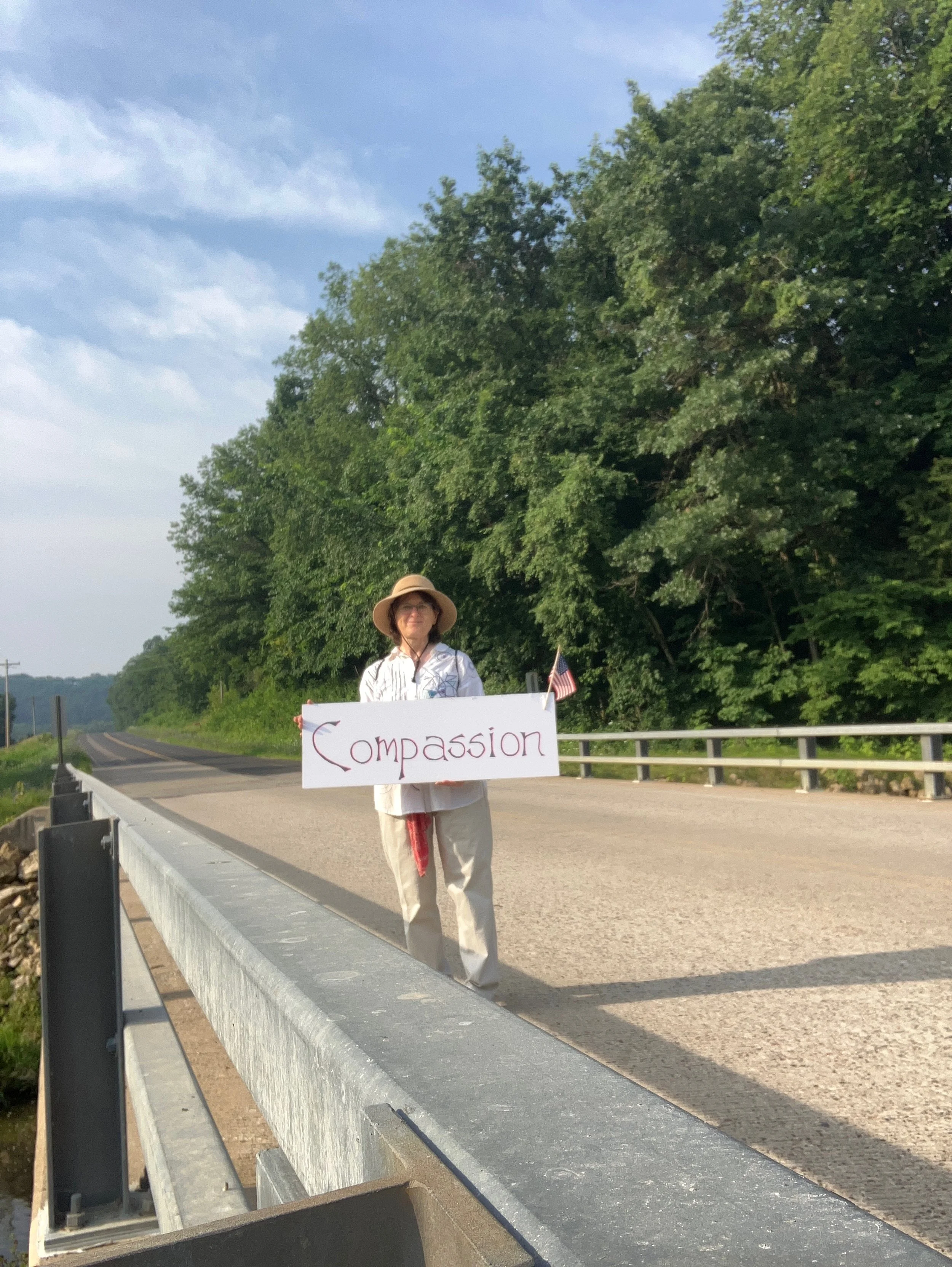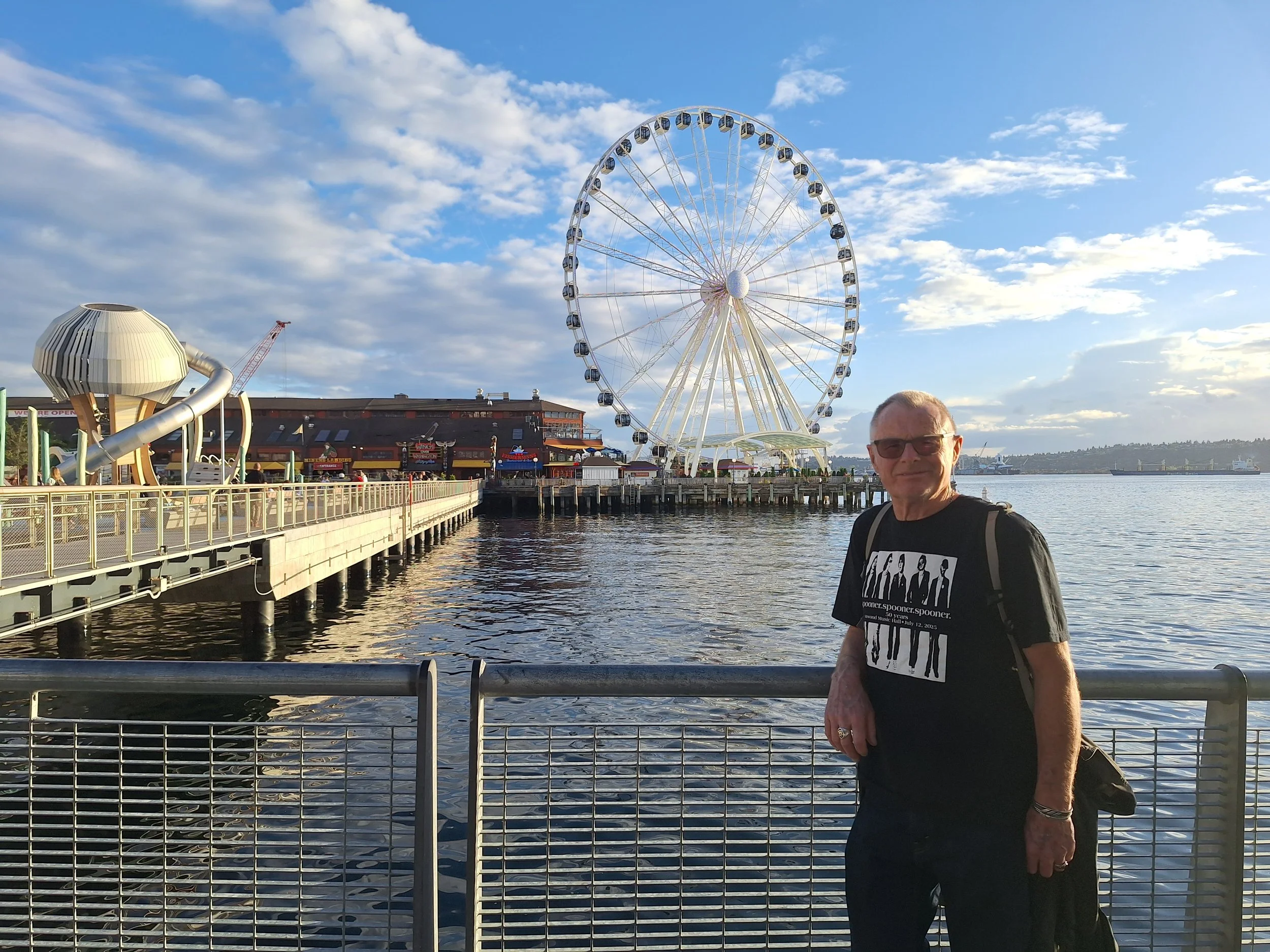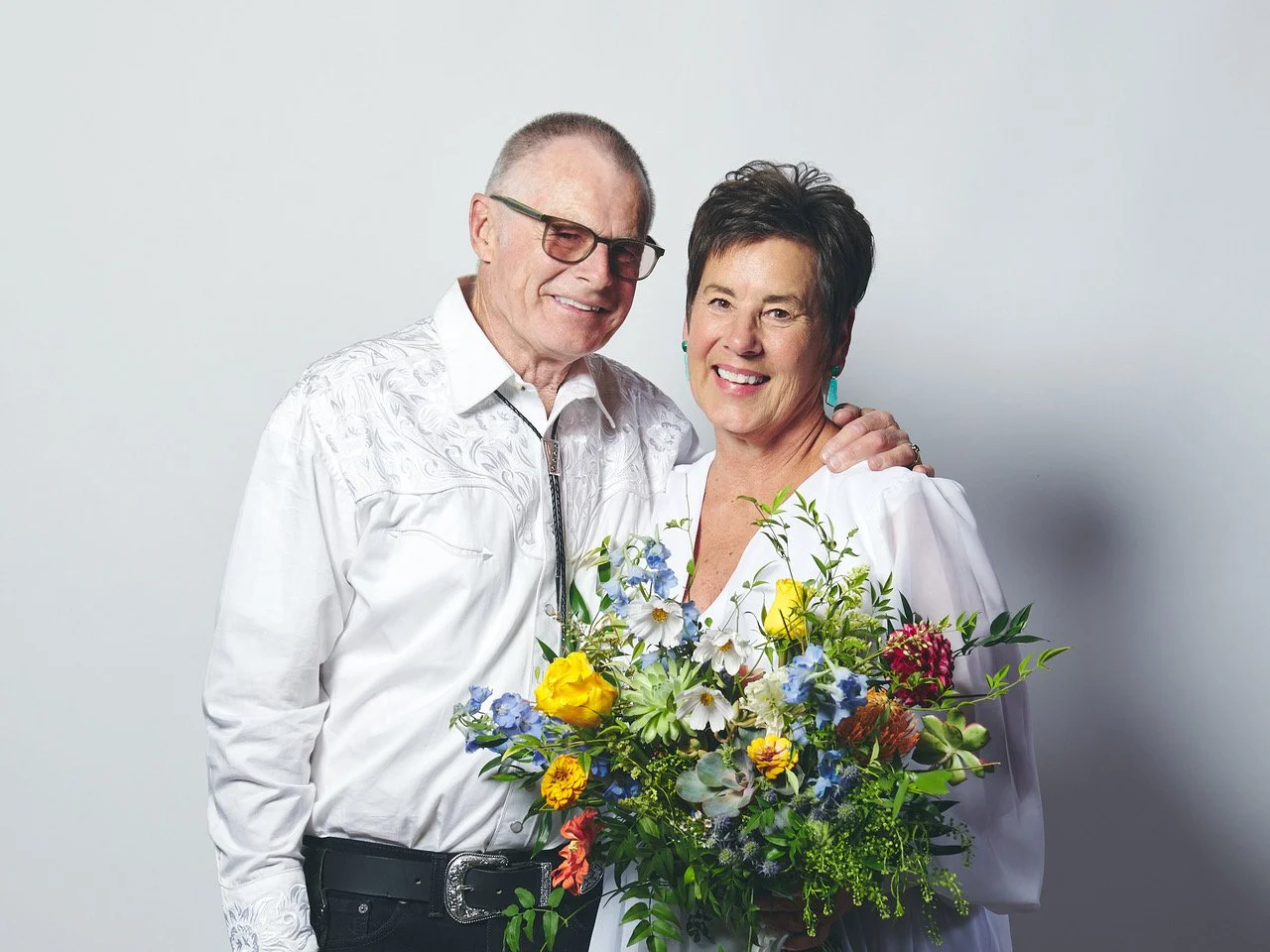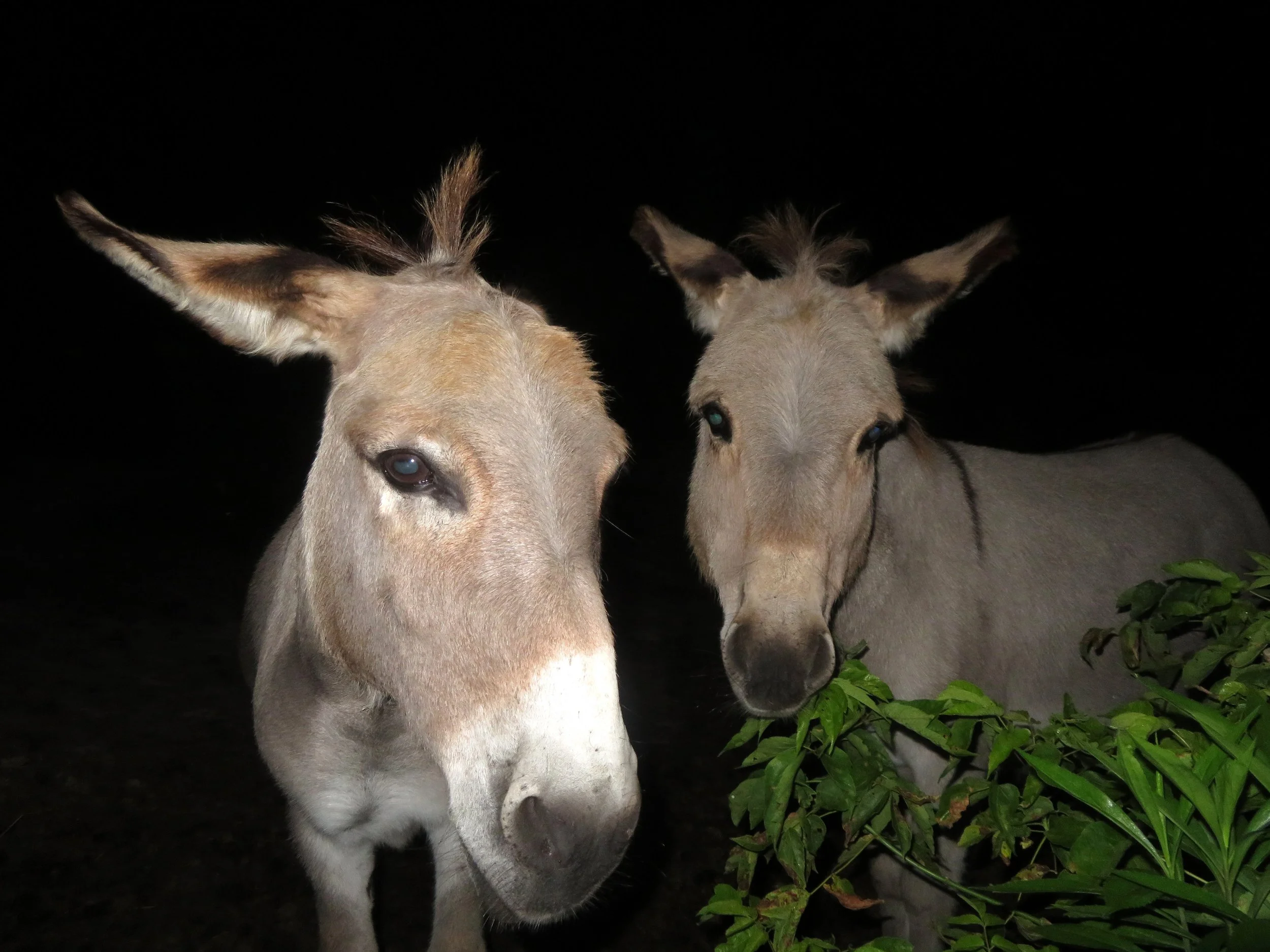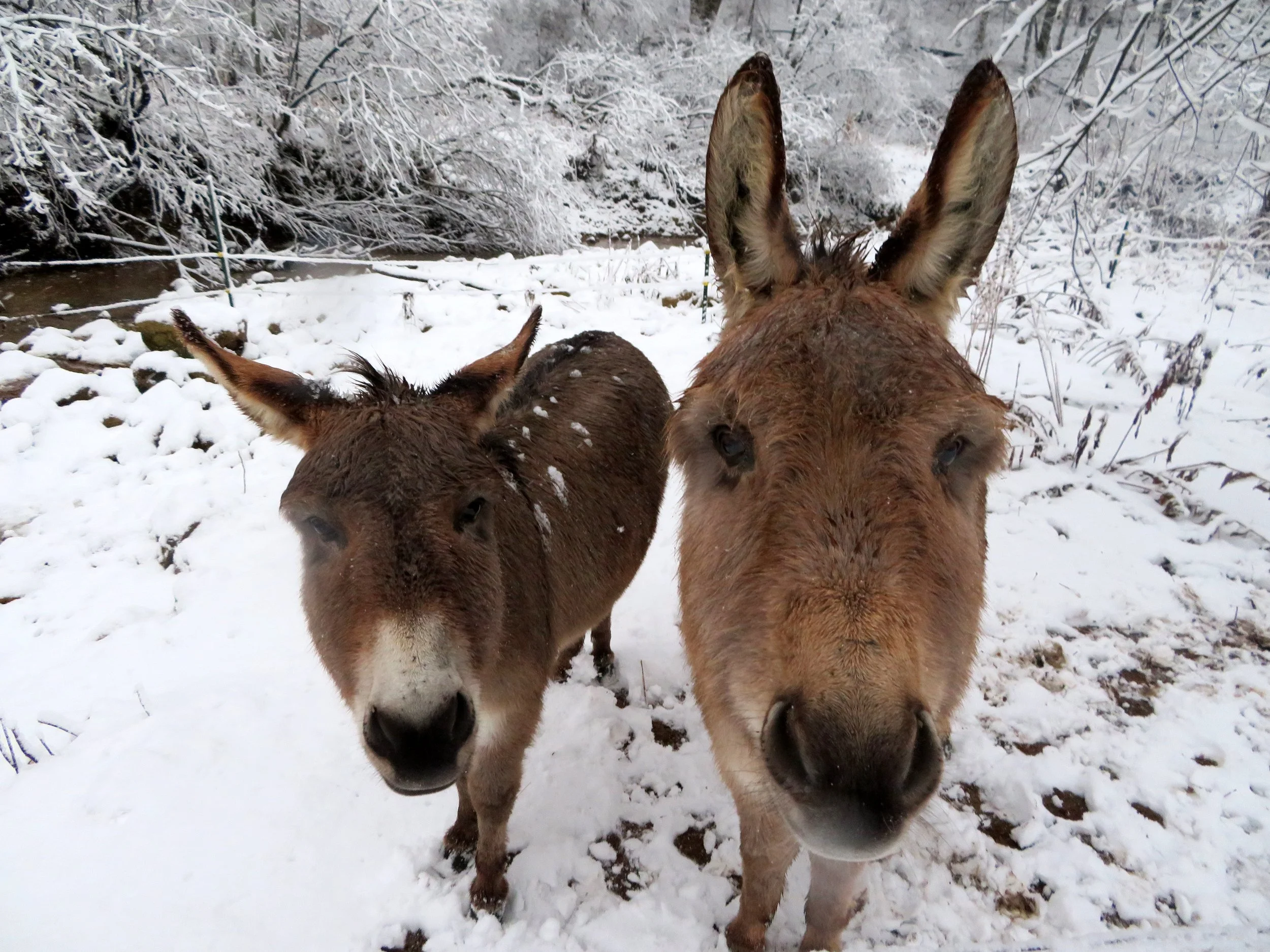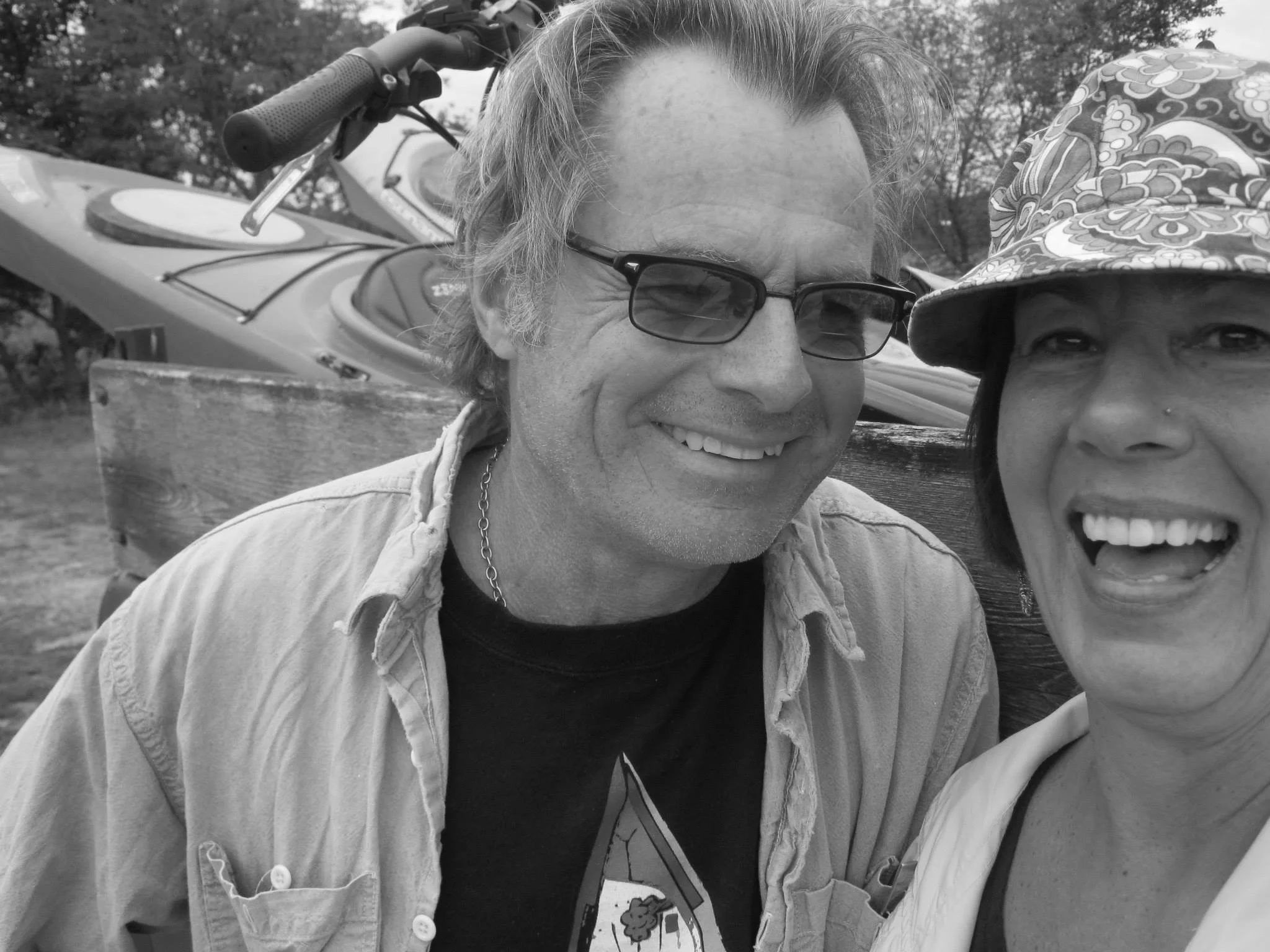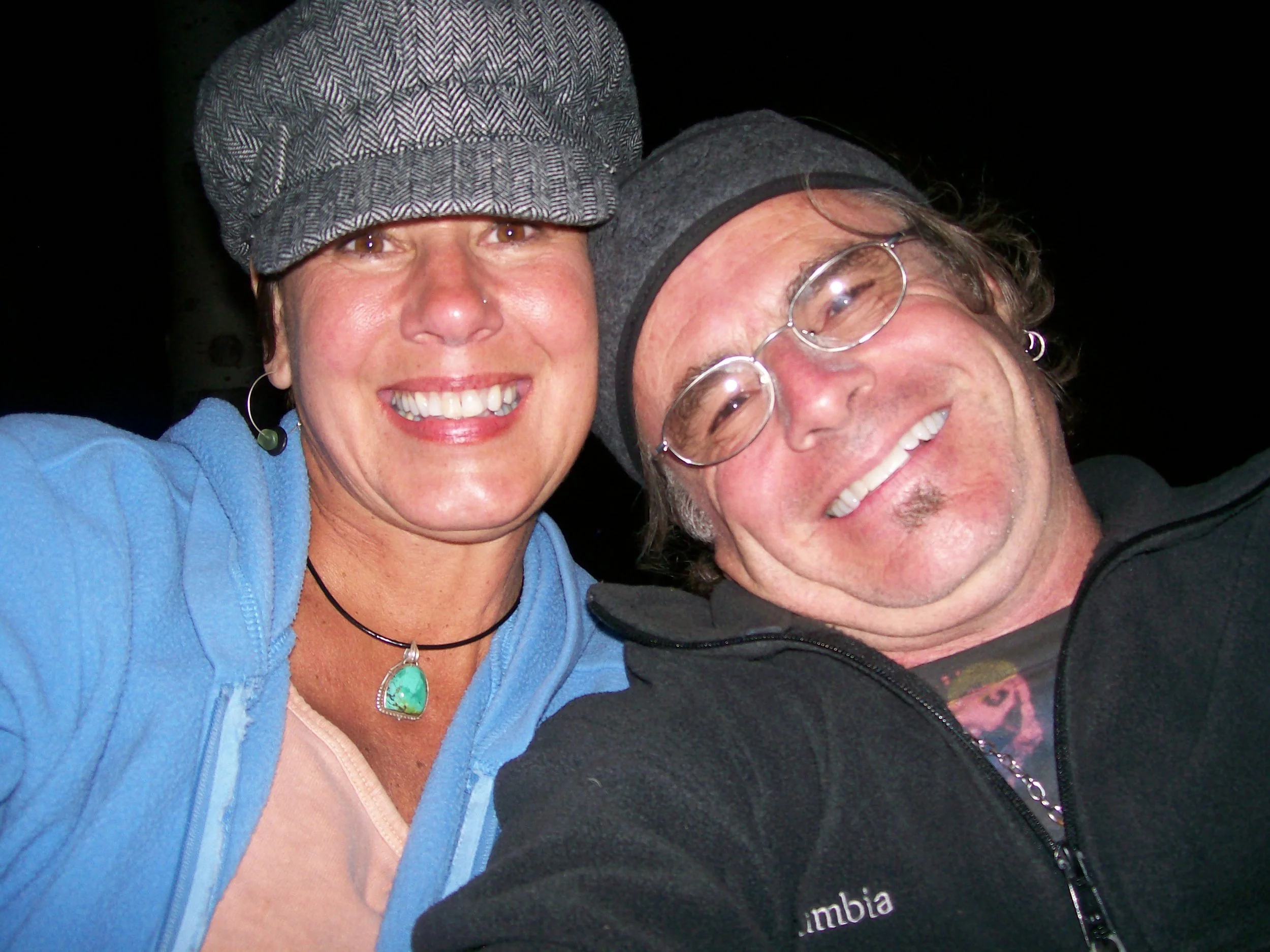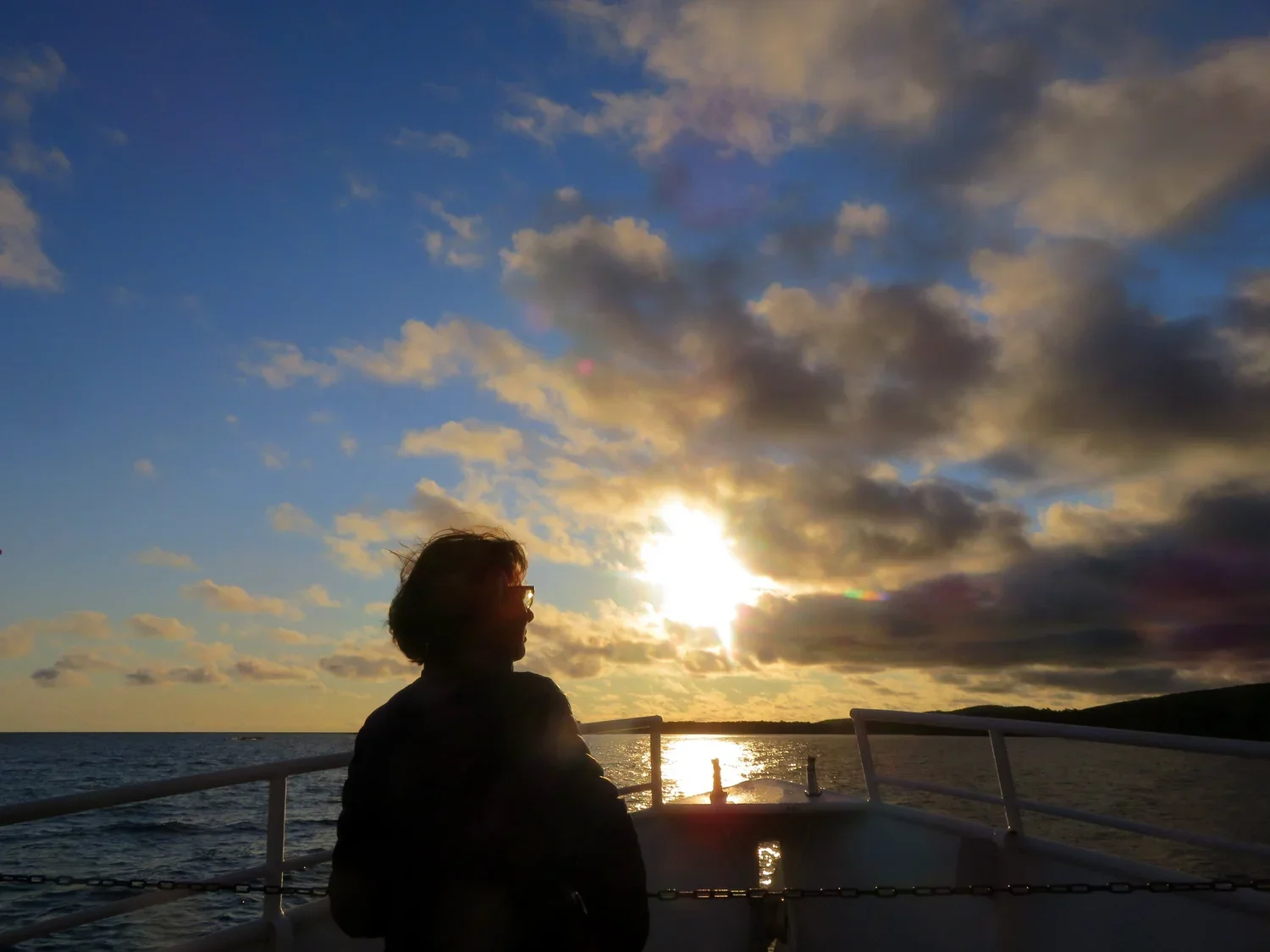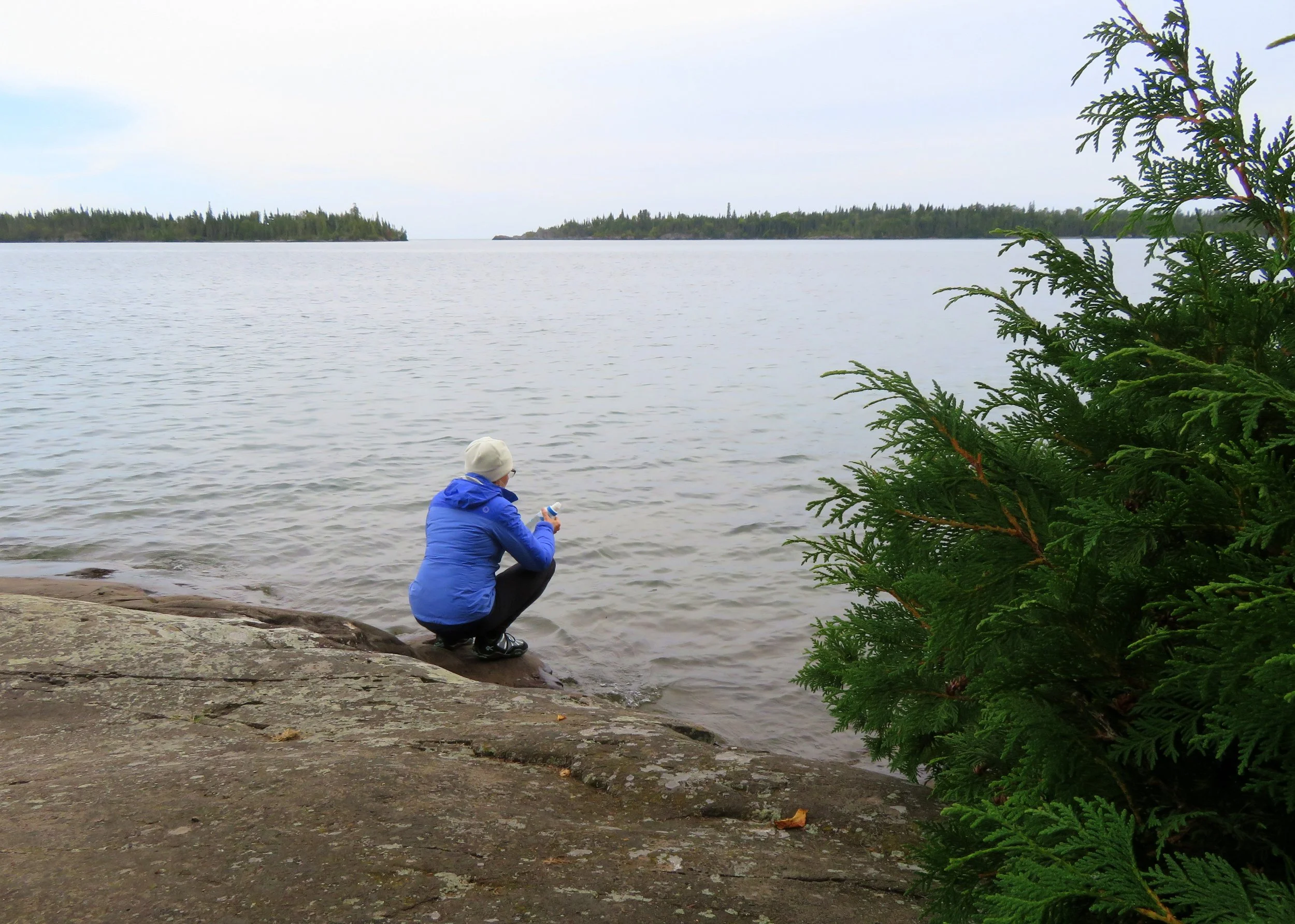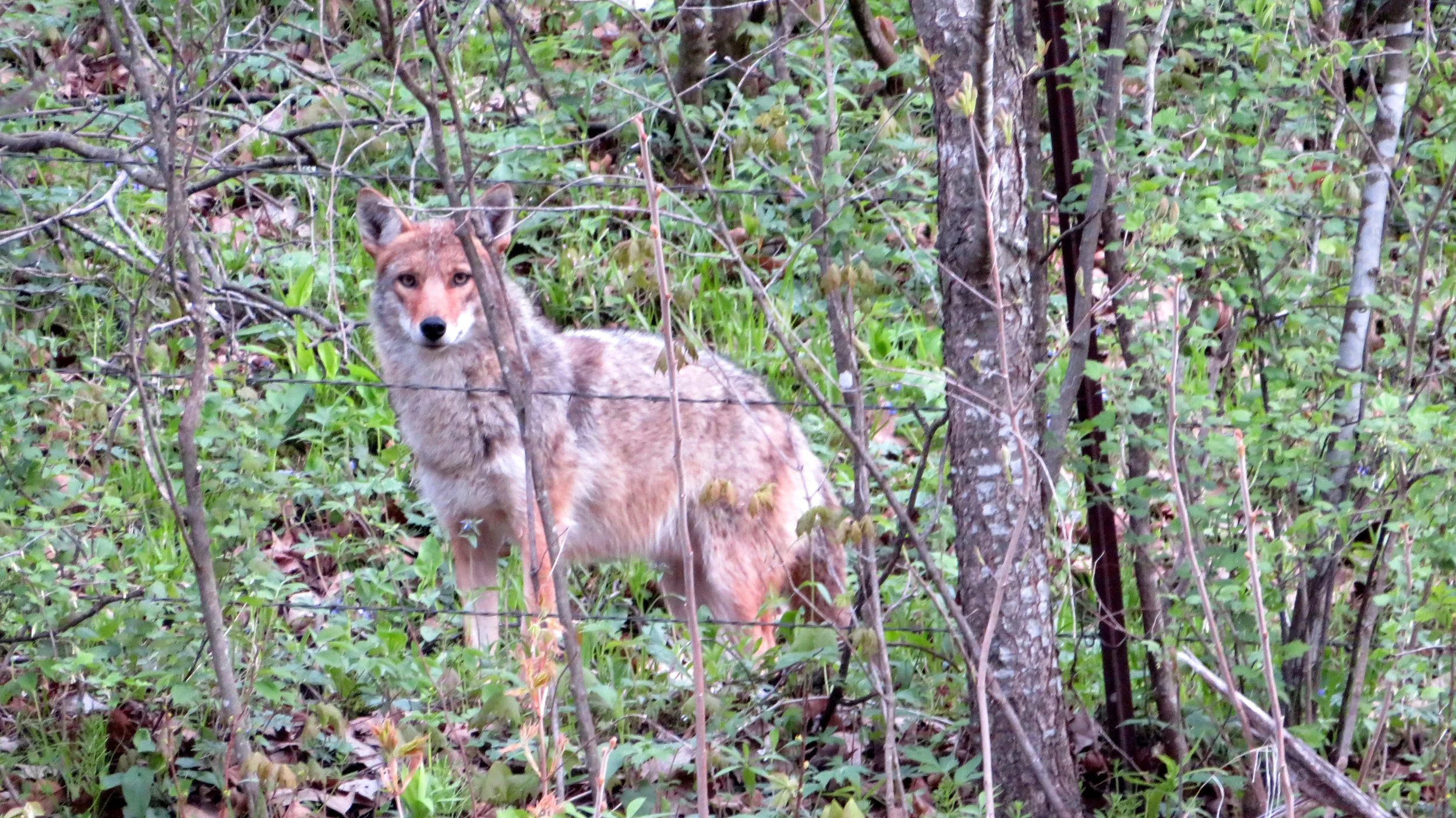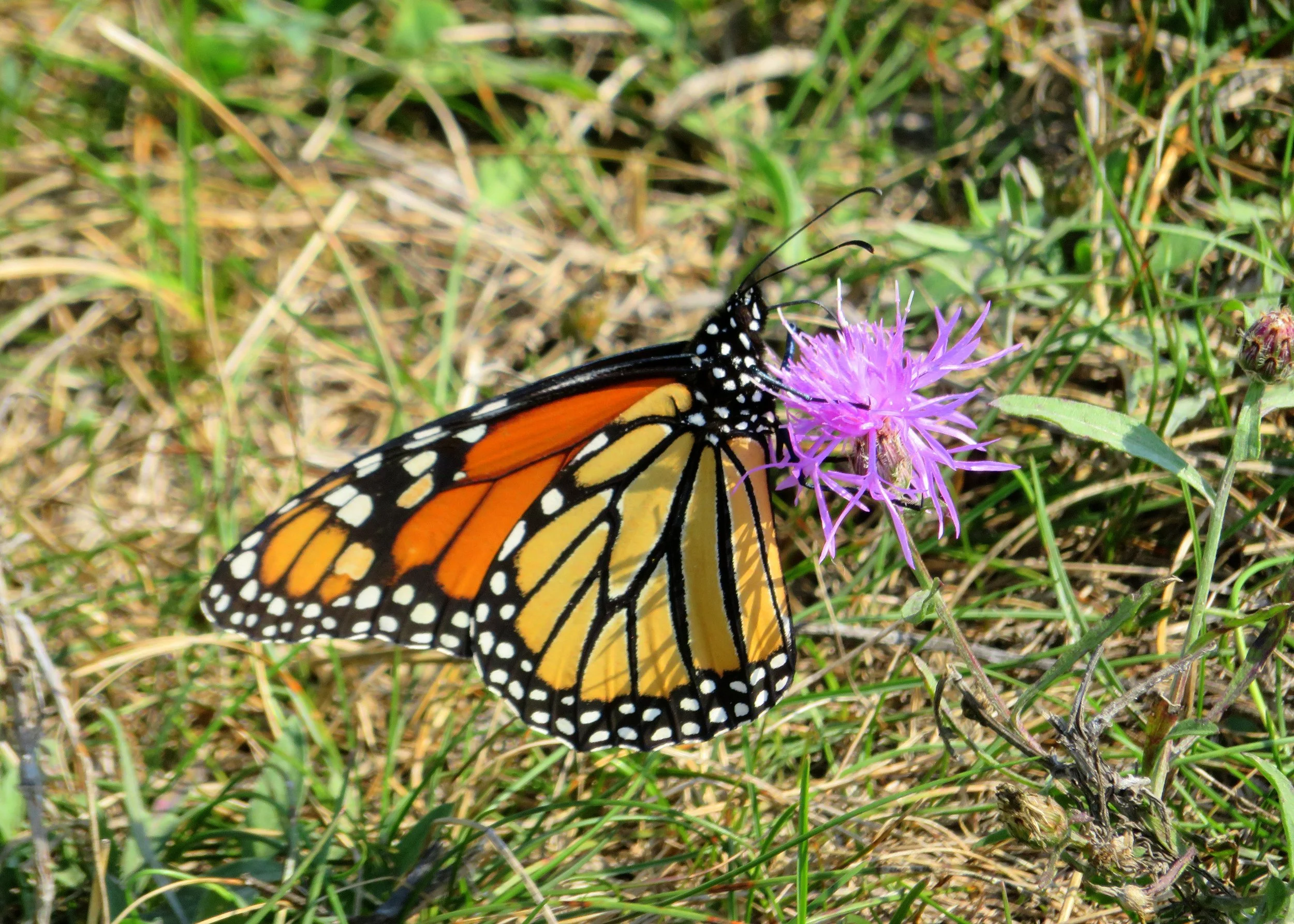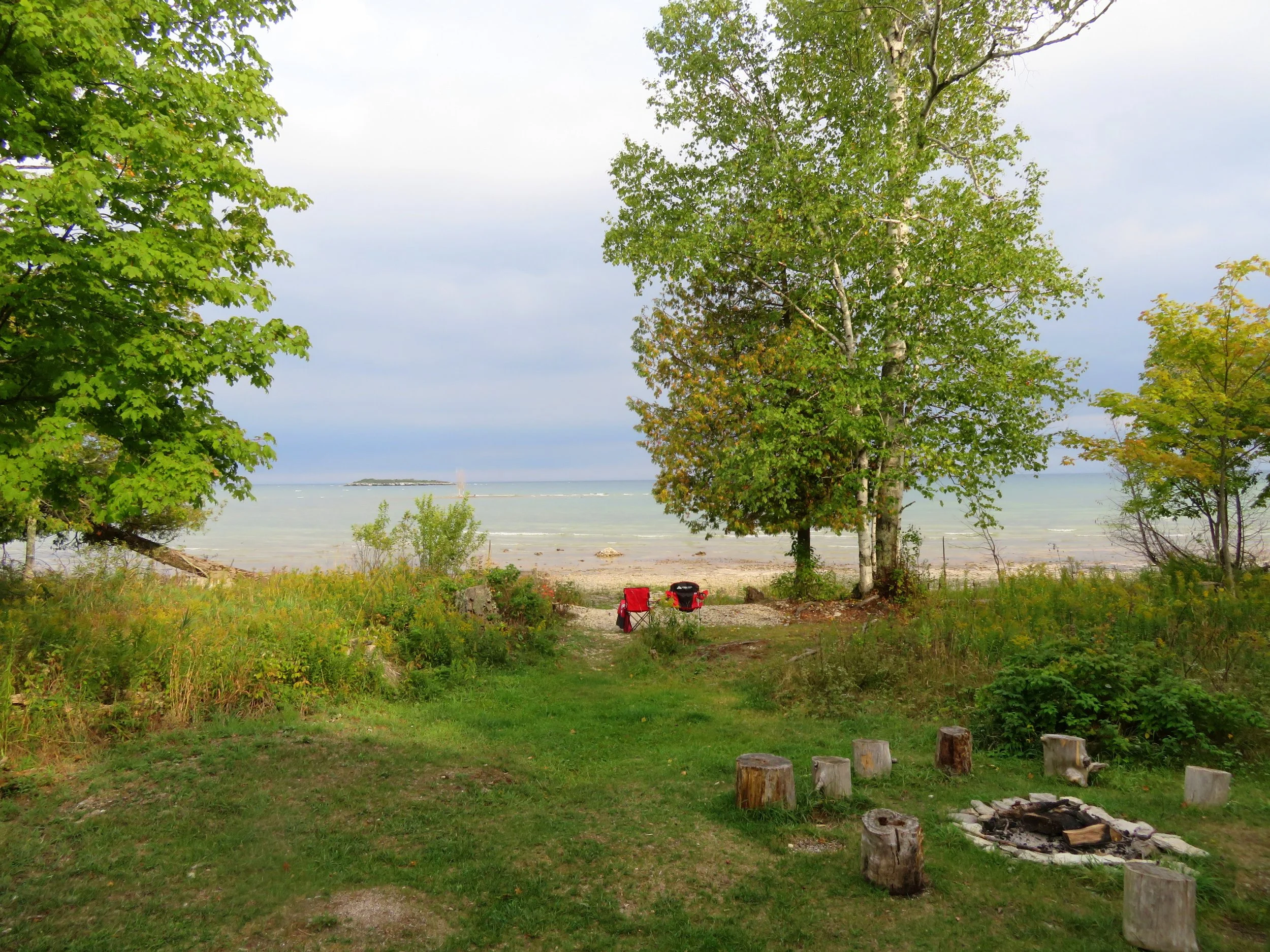The Windy City
The Windy City
“Excuse me, how do we get to the Cambria Hotel on Randolph Street?”
We’re underground, in the bowels of the Chicago's Union Station. People are scurrying purposefully around us in all directions, like mice in a maze. They know where they’re going. We don’t, so I’m asking the nearest train employee.
His directions include turning at the Dunkin' Donuts shop upstairs. Smiling, he adds, “I’ll take a black coffee and a Danish,” then turns to his partner and asks, “What do you want?” Chuckling, we thank him.
When we make it outside, we’re on the river! It’s already dark, and the city lights are electrifying. Chicago stands there in all her glory and I can’t get enough. “Oh, this is beautiful! Oh, look at those holiday star lights, they’re magnificent! Dane, look at the reflection on the water!”
There are people everywhere. Horns honking, music coming from passing cars, scooters, bikes, skateboards, and lots of black jackets, black shoes, and black backpacks. We stand on the Riverwalk, taking it all in, holding our travel bags, trying to figure out which direction to turn.
I spot a police officer standing alone against the river’s rail. “Hi, your city is amazing,” I gush, and then ask for directions. When he points to where we can catch a cab, I interrupt: “No, we’d like to walk.” Dane sighs, but he’s game. He’s concerned about time. We have a dinner reservation at 6:30 and it’s already 5:00. We’re both running high on adrenaline as we’re here to attend the 50th anniversary concert of Patti Smith's album Horses. The tickets and hotel were a wedding gift from our friends Tim and Lisa.
While the officer is deciding how to direct us to our hotel, I spy a boat that looks like a mini cruise ship in the river. He explains that the boat gives an architectural tour of the city, and remarks on how chilly it must be for the passengers on the upper deck. I make a mental note for a future trip.
One of our bags is a bit heavy (three books inside!), and although it’s not his, Dane admirably trades with me as we walk, swapping it with the smaller bag of food for the train trip.
The walk is lovely and surprisingly warm. We’re lulled into a rhythm, taking in the surrounding city life. Even the noise of the Monday evening traffic seems peaceful.
A sign outside our hotel announces that check-in is on the ninth floor. Yep, we’re in the big city! A hotel employee greets us outside, and when I explain I have claustrophobia and don’t use elevators, he whisks us to a secret door, unlocks it, and assures us he’ll be there all night if we need him again.
We climb the nine flights of stairs and are checking in when the phone rings. The receptionist says “Yes” into the phone and hangs up. I ask, “Was that the man downstairs who helped us?”
“Yes, he wanted to make sure you made it up the floors.”
Dane and I are impressed. From the man working inside the train station, to the officer near the bridge, and now both the hotel employees, it’s been smooth sailing and all kindness. Chicago is amazing, and we’re staying at an awesome hotel.
The theater is furnished in gold, and the seats are red velvet. Two helpful ushers point the way for us. Up on the balcony level another gal takes our tickets (box seats!), double-checks them, and tells us the concert will be two hours and fifteen minutes, with no intermissions.
As we sit down in our cushy chairs and watch the theater fill with people, I’m gobsmacked by the elegance of the Chicago Theatre. We couldn’t have asked for better seats or a better venue in which to watch Patti perform. And perform she does!
During Patti’s signature closing anthem, “People Have the Power,” written with her late husband, Fred “Sonic” Smith, the sold-out crowd rise to their feet. The clapping vibrates through the theater as people sway back and forth and join enthusiastically in the chorus, some holding up their phones with the flashlights on, like concertgoers used to hold up lighters years ago. The inspiring lyrics, reminding people to come together to promote change, to vote, and to use their voices, ring loud and clear. Earlier in the show Patti saluted both Illinois governor JB Pritzker and Chicago’s mayor, Brandon Johnson, for recently using their voices.
As we walk back to the hotel, the peace and cleanliness of the city, the kindness of the people we’ve encountered, and Patti’s words stay with us.
Chicago may be windy, but it’s an amazing and friendly city, hardly a “war zone.” We’ll be back.
Coffee Connoisseurs
Coffee Connoisseurs
I have a rule in my home: No standing behind me while I’m at my desk writing. This means no drinking, talking, chewing, or even breathing behind my back. Unless you've got an emergency that needs my attention, don’t do it.
The other morning, Dane was standing silently behind me.
We use an electric kettle to heat water for our morning coffee and tea. I say that with apologies to any coffee snob friends out there. We don’t have an AeroPress, an automatic drip machine, or a fancy Chemex filter, and until recently I thought a French press was a new type of bicep curl we could try in exercise class.
Because of the hard water here in the valley, we clean the electric kettle monthly with vinegar to remove the scale that’s built up. We know we’re behind the times, but it works for us.
Feeling Dane’s lurking presence, I stopped writing and turned to look at him. Holding his coffee cup, he calmly asked if I was cleaning the kettle. When I answered “Yes,” he raised his cup, as if in a toast, and deadpanned, “Imagine my surprise!”
Of the two of us, Dane is a better judge of a good cup of coffee. And it’s not one made with vinegar!
My go-to coffee is Folgers instant decaf, which I always keep on hand. By now, I know the container by its green color and can mindlessly grab it off the store shelf while keeping my cart moving.
Just the other day, I pulled a brand new jar of it from the cupboard. I opened the container, dropped a teaspoon of coffee into my cup, added boiling water, and sauntered off to my office to begin writing. While waiting for the coffee to cool, I was making progress on a column.
Reaching for my cup, I took my first sip. Yuck! Floating coffee granules stuck to my teeth and in my throat. Wiping my mouth on my sleeve, I abandoned writing and trudged back to the kitchen to get a spoon. I gave my coffee a quick stir and went back to the computer. After a few sentences, I reached down, took another sip, and this time spat it back into the cup. Gritty!
I hurried to the kitchen sink, spat again, and poured the awful stuff out. They’re making cheap coffee even cheaper, I thought, as I started over with a new cup. Standing near the sink, I took a cautious sip . Pfftt, pftt! It was just as bad. I decided I would return the jar on my next trip to town. Setting it aside, I made a cup of herbal tea.
Last night, Dane stayed over, and this morning, as I sat pecking away at the keys, he asked, “Would you like a cup of coffee?”
“Oh, I forgot to return my coffee yesterday,” I said. “It was a bad batch and stuck in my mouth. It won’t even dissolve!”
Dane walked out to the kitchen, came back into my office, and stood behind me again. “Babe,” he said, “that’s ground coffee.”
“Huh?”
“Regular coffee you brew in a coffee maker.”
“Well, it tastes horrible.”
Coffee connoisseurs we’re not!
Running for Love
Running for Love
It was a brisk 20 degrees for the Madison Marathon last Sunday morning, as we jostled with other spectators waiting to see their loved ones start the race. I worried that we wouldn’t be able to pick Ethan, my grandson, out among the 7,600 participants. But we did. Spotting him in a long-sleeved blue shirt, he sailed past us unaware of our excited encouragement. We couldn’t even hear ourselves over the deafening roar of the crowd. This was his first marathon. We were there to cheer him on and hoped he’d cross the finish line!
The death of Ethan’s sister, Helena, had motivated him to begin this journey. It made him understand how short life can be. It reminded him of his bucket list, which included running a marathon.
Ethan didn’t want to let depression keep him on the couch. Rather than running away from grief, he has used running as a healthy way to deal with the loss of his sister. Grief was his motivation, and running calmed his mind.
Ethan and Helena were both on the cross-country and track teams in high school until it became too difficult for Helena due to her cystic fibrosis. Ethan had health challenges as well. He spent his senior year in and out of the Children’s Hospital with severe ulcerative colitis, which is hard for anyone, but especially for a teen among his peers. And, at a lanky 6 feet 4 inches, he’s vulnerable to laxity in his knee joints, which can cause ligament sprains.
A self-proclaimed introvert, Ethan had enjoyed the encouragement when the crowd cheered him on at track meets. Participating in track led to new friendships and made him more outgoing. But, he said, “Running as an adult feels different. I’m able to space out and let my mind clear, giving me a mental reset. When I finish running, I’m more productive and at peace.”
When Ethan signed up for the Madison Marathon, he went into it knowing three things: he was determined to finish, it would be his only marathon, and he would wear the T-shirt designed for the annual Milwaukee Great Strides walk for cystic fibrosis, which his family participated in every year. Their team name was Helena’s Hope.
After seeing him at the start, Dane and I drove to the 16-mile mark. The sun had come out, raising the temperature to 32 degrees. There was Ethan, easier to see in his blue shirt as the runners had thinned out. He’d already doffed his sweatpants and, when he saw us, he pumped his arms up and down in greeting. “Only 10 more miles to go,” we yelled.
As we drove from the 16-mile mark to the finish line, we wondered where Ethan was along the lakefront route, how his knee was holding up, and if he’d be able to hang in there and finish. Running 26 miles is a lofty goal.
Finding a place to stand along the finish line where we could see Ethan coming was challenging. Everyone else had the same idea. But once we settled in as close as we could, our full attention was on trying to spot him. Dane was going to take a video of Ethan finishing, and I was going to snap pictures.
The course took the runners around Lake Monona and the University of Wisconsin’s Arboretum before heading back to the Capitol. Around the 23-mile mark, Ethan had doubts about completing the race. He felt stabbing pain in his knee, and his quads were on fire.
He stopped. He needed to refuel and stretch. Meanwhile, his dad, thinking that Ethan was taking longer than expected to round the corner, had jogged back to see his son at the 25-mile mark. “I told him 'you've got this' and kept saying, ‘The finish line is right up there.’ I ran next to him for a bit, but I think just seeing me picked up his spirits.”
Ethan peeled off his blue shirt. Underneath was his Helena’s Hope T-shirt. He placed his hand on his chest, looked skyward—and didn’t give up.
Not long after, he came down the home stretch to cheers from strangers and family. Watching for his blue shirt, we didn’t even spot him until he was past us!
Two days later, on his 27th birthday, Ethan’s hobbling around. He no longer says “one and done,” but he may stick to half-marathons for a while.
His grief at the loss of Helena may have been his motivation, but his love for her is what carried him over the finish line.
Lillie
Lillie after an outdoor exercise class during COVID
Lillie
On November 9 this year, Lillie will be 100 years old.
Lillie lived in Viroqua for 50 years. It’s been almost three years since she moved away, and when I asked her what she missed most, she said, “My friends.” But then she added, “I already have a bunch of new friends here!”
Lillie now lives in Norman, Oklahoma, with her son Paul and his family, but we still see her twice a week, often three times, in our online Zoom exercise classes.
Lillie has been a role model for many of us. I met her 22 years ago in an exercise class I was leading called Strong Women. The first thing I noticed was that she already knew just about everybody in the class—and if she didn’t know them yet, she soon would!
It was about that time she started bringing me smoothies. After class, she’d hand me a drink and list all the healthy, wonderful ingredients in it. She knew I was traveling from one class to the next, and she wanted me to stay hydrated.
Once, as we walked out of the building together, Lillie missed a step and took a hard fall. As my heart raced and I considered calling 911, she popped up, brushed herself off, and said, “I’m okay!”
At the time, she was about 83 years young. I remember thinking how well she bounced—no broken bones—and how someday I hoped to be as strong as she was.
Lillie retired at 77 from Bethel Home, where she’d worked as a nurse, but she continued helping out on the night shift until she was 82. When I asked why the night shift, Lillie explained that it was the hardest shift to fill.
Recently, in class, Lillie shared with us that she’d been diagnosed with an aggressive cancer, a parotid salivary tumor near her right ear. She felt her prayers for clarity and unity were answered when she met with her oncologist, who said that radiation would stop the growth and might even get rid of the tumor. Since then, it hasn’t spread to any other part of her body.
Before that appointment, when I asked Lillie her thoughts about having cancer, she answered, “It might be my time to be promoted to glory.”
Lillie’s attitude and faith aren’t a surprise to me or to anyone who knows her. She explained to me long ago that, throughout her life, she’s wanted to “know God better and have peace with him.”
At 36, as a young RN working in Stanley, North Dakota, Lillie attended a Lutheran camp to deepen her relationship with God. It was there that she met LeRoy, a minister at a small church who had brought several kids to attend the camp. LeRoy struck up a conversation with her as she enjoyed an ice cream cone. As Lillie said, “The rest is history.” They married a year later, in 1964, and had two sons, Paul and Jon.
LeRoy was "promoted to glory" at the age of 92. “It happened so fast,” Lillie said. She was at work at Bethel and made it to the hospital, where he passed away after a fall.
Every time we talk, Lillie recites her favorite scriptures to me, as if she’s reading straight from the Bible, but she isn’t. I’m awed by her memory, but even more by her total faith in God. She asks me if Dane and I are reading any of the Bibles she has sent us over the years. Lillie never wavers and assures me that the word of God is active.
In class, when we asked her to share her secrets to a long life, Lillie mentioned it’s important to keep moving. Her dad had participated in gymnastics while growing up in Denmark. He would tell her and her siblings, “What you need is some movement!”
Today, Lillie tells us that she regularly walks around the block with Paul, pushing a stroller that holds a 20-pound weight to keep it stable. It’s 2,400 steps around the block, and Lillie says they try to walk it every day, but they usually go around five times a week. Her goal is 5,000 steps a day, and on days when she and Paul aren’t able to get outside, she walks the house’s wood floors.
She still participates in the exercise class too, and feels that it has been helpful. But she tells us that having a personal relationship with God is her biggest secret to a long, healthy, active life.
While I may never be as strong as Lillie, she’s a shining example of good health and is loved by many. Happy 100th birthday, Lillie!
Lillie (Pink and white striped shirt) after exercise class
North Elk Run Little Free Library & Treasure Chest
The Bookmobile would pull into the Hales Corners shopping center parking lot once every two weeks. Mom and I would be waiting. I loved seeing the Bookmobile's turquoise color and its bullet shape.
The step into the Bookmobile was too high for my short legs, so Mom would grab my arm and hoist me up. Then I was lost—lost in a world of dogs, horses, and a book about a girl named Laurie who wanted yellow curtains.
Soon enough, I’d find the round metal stool you could push around to stand on or sit on when reaching for a book or flipping through one. While Mom was in her section, I’d pull out the books that interested me, sit on that stool, and look through them until I had the ones I wanted to take home pressed against my chest.
The storybook I remember most vividly was about a dog called Peanut, the same nickname my Dad had given me. The tiny brown, black, and white dog was so small it could sit on top of a spool of thread. I’ve searched for that book ever since but haven't found it yet.
Mom checked out my books with her library card until the magic day I signed my name and received my own. I loved the sound of the librarian’s stamp, stamp, stamp!
I still love reading. I love holding the book, looking at the author bio on the back cover, reading the testimonials, seeing who it was dedicated to, and then delving into what the author has to say.
Until recently, I had a giant bookshelf in my spare bedroom, made for me by my friend Roger when I lived in the one-room cabin on Pa’s Road. I gave it to Dane because I wanted to fit a desk in there, so the bookshelf had to go. There are still three bookshelves in my living room, one in the mudroom, and another in my office.
But I can’t possibly keep all the books I read in my 800-square-foot home anymore. Where would the dogs, cats, parakeets, and snails go?! So about seven years ago, I began gifting many of my books to my neighbor, Meaghan. I’d message her, then drag bags of books out to my roadside mailbox, where Meaghan would pick them up on her way to work. She would keep some to read and give others to her parents or the local school library. It was a great system that served us well.
Imagine my surprise when Meaghan, her husband Jake, and their children, Xan and Margo, said they wanted to stop over before our wedding to deliver our gift: a Little Free Library made by Jake, with a sign painted by Margo.
We found the perfect spot where Jake won’t hit it when he plows my driveway, or Dane when he backs out of it. Then, while we were away on our honeymoon, Jake came over, dug a hole, and poured concrete for the post supporting the library. Our critter sitter snapped pictures of his progress and messaged them to us. We couldn’t wait to see it and fill it with books!
When we returned, I was able to pick out a few books to give away, but most of the books I no longer wanted had already gone to Meaghan, other friends, or the free table at the dump. Dane, who reads just as much as I do—his attic bedroom is insulated with books from floor to ceiling—has a hard time parting with any of his books, so he hasn’t contributed many yet either.
I found the perfect solution: I bought my favorite books at the Richland Center Goodwill for a dollar each and put them into the library.
We’ve also added treasures for the adults and kids who stop by: a bird nest, feathers, heart-shaped rocks, small vases, and even earrings. Last week, Meaghan told me Margo found a treasure to give her friend who’s been sick. Oh, that does our hearts good!
Recently, someone else dropped off a few books, and I once spotted someone stopping in their car to take a look. The passenger picked out a book that, after my detective work, I was positive was Eleanor Oliphant Is Completely Fine. A week later, it was back in the library, ready for another reader to choose it.
I’m completely in love with our new Little Free Library and would be thrilled if you stopped by and picked out a book. All libraries bring us the joy of books, but now in rural Viola, folks can simply stop by, pick a book or a treasure, and keep going. Honk if you do!
Good Neighbors: Always & Nowadays
My parents said, “Be a good neighbor.” I’m your neighbor. Ow, my neck still hurts. The world news is horrifying. We’re on the 26th day of a government shutdown. The local pantry doesn’t have enough food. People who receive SNAP (Supplemental Nutrition Assistance Program) benefits will be hungry.
Tossing restlessly in my bed covers, I sit up. It’s dark out, and the dogs are still sleeping. I look at the clock: 4:30 a.m. I fall back in bed and this train wreck of thoughts continues until suddenly my mind shifts to Tamsen.
Tamsen stands on the bridge near Bloomindale on some Wednesday afternoons, sometimes alone, sometimes with a friend who lives nearby. She carries a sign that reads “Compassion.”
Sometimes people wave, honk, or stop to chat. Some want to know what she’s up to, while others just want to say hello. Her message of compassion is always important, but especially nowadays.
Lately many of us feel our bodies are tied in knots—hip pain, back pain, shoulder pain, neck pain. Tension is running rampant in our country.
Roughly 1.4 million federal workers won’t be paid come November 1st. You don’t have to look far to know someone whose family will be affected. Look out your window, talk to the person next to you at the gas station, or go to your local dump and start a conversation.
The US unemployment rate is the highest it’s been since October 2021, when it hit 4.5%. At that time, the country was recovering from the pandemic. Today it’s at 4.3%.
I force myself up, slip on some clothes, and head down the stairs to start the day. My head is still spinning with thoughts that keep coming back to Tamsen standing on the bridge, and to my Dad, who drilled into me the importance of being a good neighbor—a good person.
When I was a little girl and played daily with the neighborhood children, Renée started acting weird, like wearing a jacket in summer. As children, we laughed. But Dad explained to me that she had been diagnosed with leukemia; the sadness in his voice scared me. He had me color pictures for her, and Mom made food for the family. Later their house was always dark and I hardly ever saw Renée’s parents or her older brother. Renée had died, but the lesson of compassionate action stayed with me.
The Trump administration recently told state officials that there will be insufficient funds to pay November SNAP benefits. This directly affects Wisconsin’s FoodShare program and our food banks. According to Governor Evers, 700,000 Wisconsinites will have reduced access to food and other groceries. Some of our neighbors won’t be able to feed their families this winter.
Here in the Driftless region, our local food banks are already suffering because of this administration's federal funding cuts. What can we do? How can we help? These thoughts turn over and over again as I put on a brace to give my neck some relief.
Is the message of compassion enough, I wonder? Many of us have been supporting our local pantries with leftover produce, nonperishable food, or monetary donations. Recently, I learned that being a good neighbor means more than food help. A large group of community members attended a local school board meeting to support a family whose child was being bullied. The family was grateful, and I reminded myself that I was also there to support the school board members because we know how stressful and potentially divisive these situations can be.
I noticed Tamsen sitting in the front row. Later, she reminded me: “That’s what community looks like.”
Practicing compassion at a time when our neighbors may be hungry, worried about their Medicare benefits, or facing job jeopardy is a good way to be a good neighbor. If I move from compassion to action, it may make a difference.
Governor Evers stated, “I can’t just do it by myself.” He went on to say that it appears unlikely the state will step in to cover the costs of these programs in the short term. Any funding would require the approval of the Republican-controlled legislature.
What does being a good neighbor look like to you? I’m trying to gather my courage for an idea inspired by Tamsen. On dump day, I’d like to set up a table adorned with free books, pumpkins, long-lasting foods, and treasures. I’ll put up a sign that reads, “We’re all neighbors here!”
Evers can’t do it alone, I can’t do it alone, nor can Tamsen, but together we can do it. And isn’t that what community looks like?
(Call 211 to ask about food sources near you.)
All Aboard!
All Aboard!
“We’re trainees now,” I proudly whispered to Dane as we stood, legs braced, hands touching the walls of the Empire Builder, waiting for the train to stop. I’d appropriated the term to mean we’re now experienced Amtrak travelers.
After almost five full days of train travel, we feel we’ve learned the basics and know a few tricks to share.
First and foremost, never open the train door, even after a complete stop. Only the conductor may do that. This seemed like a no-brainer to us, but not to the gentleman ahead of us as we neared the Minot, North Dakota, train depot. The conductor chewed him out so thoroughly that I was about to cry, “Stop, just beat him,” thinking it may have been more humane than the public verbal thrashing he was receiving.
And don’t even think of entering the dining car unless you’re an elite passenger spending a small fortune for a sleeper car designed for people the size of hamsters with the flexibility of an octopus. Meals come with that pricey sleeper ticket, as does the privilege of booking your dining times. Coach riders need to wait by the door to be seated if there’s availability, and then only four people at a time. If you’d like a dining car meal, we’d recommend the $20 breakfast and skipping the more expensive lunch ($25) and dinner ($45 per person).
One benefit of eating in the dining car is making friends with your random tablemates. Another is the chance to load up on as many beverages as you can drink or carry away. Our no-nonsense waitress granted us each a coffee, a bottle of water, and a can of ginger ale before saying enough is enough.
An alternative to the dining car is the “café” on the lower level, with hours and rules that seemed to depend on whoever was running it. I learned on the way to Seattle not to touch anything but to point and ask; on the way home, not to point but to go and get the food I wanted to purchase; not to ask bothersome questions like “Where’s the cream”; and always to wear shoes. You can get away with being shoeless on the upper level of the train, but not in the café.
The best buys by far in the train café are the Asian noodle bowl, with its fresh and crispy red pepper and cabbage, and the Greek salad.
You can save money and get more nutritional bang for your buck by packing a small cooler and bringing it with you. We packed two and intentionally left one on a busy street in Seattle, loaded with cheese, sausage, crackers, and grapes. With many hungry people on the street, it was gone by the time we reached the corner coffee shop.
I was often scolded on the train, much to Dane’s amusement, for asking questions the personnel felt I should already know. In one of those conversations, I learned that the observation car we’d been enjoying all day would depart the train after midnight. If we’d stayed in that car, we’d have wound up in Portland with our luggage in Seattle!
To save money, we recommend skipping the sleeper car. Also, the sooner you book your tickets, the cheaper they are. Our round-trip coach tickets from La Crosse to Seattle were under $200 each, far cheaper than driving. Unlike at an airport, there’s free parking, and instead of the stress of navigating unfamiliar roads, you can do your work, play games, read a book, or even sleep...if you’re able.
Dane had no problem curling up and falling asleep in the seat. I tossed and turned until I discovered the observation car chairs were easier to get comfortable in. A neck pillow is a must, as are a light blanket and an eye mask. Earplugs might be helpful, too, but not if you want to harmonize with a group of Amish people singing, clapping, and playing the harmonica well past sunset.
I loved learning that at seven depots along the route, the passengers were allowed to get off, stretch their legs, and get some fresh air. In Minot, an enterprising woman has set up a coffee trailer called the Daily Buzz in an empty lot near the station. By the time we walked over, there was a long line, but it was worth the wait for a steaming cup of chai tea and some exercise.
We haven’t even been home for a week, and we’re already looking into tickets for Glacier Park, Montana. If we buy them now for next year, they’re $100 round-trip. Well worth it for another great train adventure.
All aboard!
Rainless in Seattle
Rainless in Seattle
From the start, Dane wanted to go on a train trip for our honeymoon. After learning that Glacier Park, our first choice, might be closed due to snow, we settled on Seattle. Dane had been there before, loved the city, and was eager to show me around. We couldn’t wait to be together near the sea. But he also warned me that Seattle is wet, so I packed my rain jacket, rain hat, and umbrella in the outside pocket of my carry-on.
We hopped on the train in La Crosse on Tuesday evening and arrived in Seattle Thursday afternoon, ripe with train sweat. We took a taxi from King Street Station to our hotel, but when the driver dropped us off at a skyscraper, we knew we were at the wrong place. He’d mistaken our hotel's name, ACE, for the Marriott’s AC Hotel, so back in the cab we went for another wild ride through the busy streets.
The brick ACE Hotel at the corner of 1st Avenue and Wall Street offers a great view of the ocean. The room was cozy and perfect in every way, except that the hot water wasn’t working. The staff were kind when explaining about plumbing and old buildings. Anxious to get out and see Seattle, Dane only splashed the water halfheartedly on himself as I howled and immersed myself in a cold-water plunge.
Holding hands, we stepped out jacketless into a glorious, sunshiny late afternoon. We headed toward Pike Place Market, where Dane bought a colorful shirt. We ate a late lunch/early dinner at a Thai restaurant; took in a tourist attraction called Wings Over Washington, highly recommended by the hotel staff; boarded the Bainbridge Island ferry to take in the sunset; and rode the famous Seattle Great Wheel.
Wings Over Washington is a thrilling state-of-the-art flying-simulation theater that had both of us gripping our seats. I don’t think we were ever more than a foot off the ground, but the illusion of flight was so strong that Dane kept gripping his backpack, afraid it would fall out!
The ferry ride wasn’t at all what I expected. Unlike the small boats that ferry us to Washington Island, this was a massive floating kingdom with multiple floors, restaurants, plush seating, gift shops, and elevators and escalators.
As we’d anticipated, once the sun set, the evening skyline was aglow with lights of every color reflecting off the calm waters of Elliott Bay. After disembarking, we headed to Seattle’s Great Wheel and rode in one of the gondolas, marveling at the gorgeous evening and how warm it still was.
By the time we got back to the hotel, we were exhausted and thankful for hot showers before bed.
For the next few days we played tourist, starting with a visit to the Seattle Aquarium. We spent most of a day immersed in the brilliance of Dale Chihuly’s glass art, enjoying the outdoor garden, restaurant, and a theater where we watched a glassblowing demonstration. We also toured the Museum of Pop Culture, but weren’t able to see it all before it closed.
Our friends Cynthia and Chris had given us a gift certificate for the woman-owned Elliott Bay bookstore. As soon as we walked in, Dane went one way and I the other. Later, our arms full, we checked out with huge smiles on our faces.
On our last day in Seattle, we took a slow walk through the parks and along the bay, ending up back near Pike Place Market. For lunch, we decided on Beecher’s Handmade Cheese café, where we each had their signature salmon mac and cheese and shared a tuna melt.
After walking more than 25 miles in just three days, we were ready to sit back and relax on Amtrak’s Empire Builder. As we sat in the observation car, looking out the floor-to-ceiling windows, we felt like we were watching a moving art show. We appreciated the seven stops between Seattle and La Crosse where we could get off, stretch our legs, and get some fresh air.
The last of those stops was in Minneapolis, where we eagerly headed for the coffee shop at the train station, since the train served only instant coffee. I spied a lovely bookstore with a sign that cautioned us not to let the resident cat out. Dane and I spent way too much time inside, browsing the books and petting the cat, and missed our train.
This gave us a few extra hours to wander around Minneapolis as we waited for a commuter train (the Borealis) to take us home. Thankfully, our luggage was there waiting for us. My rain jacket, rain hat, and umbrella had never left the pocket where I’d put them.
A New Journey
A New Journey
The day before our wedding, I called Dane to see how many words his vows were. “120 words,” he answered.
Mine were already over 900! I got busy cutting, and Dane got busy doing whatever grooms do the day before their wedding.
My daughter, Jessica, was here to help me with wedding errands and to celebrate her 49th birthday. We went for manicures and pedicures, then out to eat, and picked up my wedding outfit. Back at my place, we hung it on the shower curtain and I put a note on the door: “Stay out. This means you, Dane!” He and I had agreed on a few simple traditions: to separately write our own vows, not to show or tell him what I’d be wearing, and not to see each other before the ceremony on the day of the wedding.
We’d done our homework: programs and complimentary bookmarks were designed and printed, Dane had assembled the books that had brought us together, and the cobalt blue vases we’d collected for over a year were on the tables at Sittin’ Pretty Farm, filled with gorgeous flowers.
I had put together a slide show of our 19 years together, including our first two years of “non-dating” when I was reluctant to commit to the idea of actually dating. The Jaynes family had prepared a wonderful charcuterie spread, while professional photographer friend Richard and his wife Valorie had set up shop to take pictures. Steve, the proprietor of Sittin’ Pretty, was cooking up a storm, and Laura had delivered an assortment of individual cheesecakes.
On wedding day morning, I had time to lie on the back deck and read, although my focus was shot; Dane later mentioned he’d felt the same way.
As the ceremony was about to begin, I hid behind a window and watched the guests arrive.
Dane and I had created a cheat sheet for Kristina, our officiant. Right on cue, as Bob Dylan’s song “Buckets of Rain” started to play, my rat terrier Finnegan, sporting a tuxedo bandana, walked me down the aisle.
As Finn’s babysitter, Maureen, took him from me, Dane walked up the aisle to join me. Together we lit a candle in honor of our parents, my sister and brother, and my granddaughter Helena, who were deceased or unable to join us that day.
Kristina led everyone in reading a short wedding blessing written by James Dillet Freeman. Then Dane read the passage “On Marriage” from Kahlil Gibran’s The Prophet, and I read an excerpt from The Amber Spyglass by Philip Pullman.
When Kristina read us the declaration of intent, I answered, “I do,” and Dane answered, “I will.” Next Dane read me his vows, and although I told a story or two as I read him mine, I had trimmed it from 900 words to 256, while Dane’s had increased to 133.
Dane’s vows included these words: “I will work to create with you a marriage grounded in kindness and compassion toward one another, and together toward our fellow creatures, and to share in your sense of wonder at the large and small graces of this world.” He also used one of our favorite quotes from William Blake: “For every thing that lives is holy,” which we’d printed on the bookmarks for our guests.
When it was my turn, I shared a story from an early disastrous backpacking trip. We’d not only finished the trip but had plenty of laughs, a good sign that our relationship might work.
Then I slowed down and read Dane my vows, saying in part, “I love our shared faith in the holiness of all things, along with our mutual gratitude and respect for not only each other but all others.”
We kissed, and Kristina introduced us as Dane Thompson and Jane Thompson Schmidt. Our celebration song, “I’m Gonna Be (500 Miles),” by The Proclaimers, blared out, and flash dancers popped out of the audience while Dane and I held hands for the first time as husband and wife.
But we weren’t quite done! In the receiving line afterwards, our friend Ron mentioned, “You forgot to exchange rings!” We’d had our rings made years ago and had of course brought them with us, but we’d accidently left that part off of Kristina’s cheat sheet! Those who were still in the receiving line watched as we placed the rings on each other’s fingers and kissed again.
Now, two days later, we’re getting ready to settle into our seats on the Empire Builder for our first train trip to Seattle, and begin the long, new journey of marriage.
Game on!
Game on!
My brother Jack and I once had a contest to see who could jump rope the longest without missing. Just thinking about that grueling challenge exhausts me now. He won!
Remembering the family ping-pong games that took place in our basement makes me smile. We kept track on a chart: Dad played my brother, the winner played my sister, and then the winner of that match would play me. Sometimes I’d win, and often I’d lose, as the list kept changing.
My life has always been full of play and games: board games, card games, and active games. My childhood included Hi Ho Cherry-O, Crazy Eights, Chinese checkers, and Monopoly. Later our family graduated to blackjack, Jarts, Yahtzee, Shut the Box, Scrabble, badminton, ping-pong, and baseball.
Play and games followed me into elementary school, where they became important, too. Each day, I’d watch the clock, eager for recess time, when we could play tetherball, four square, and red rover.
In the evenings and on weekends, I’d meet up with the neighborhood gang for red light green light, freeze tag, and baseball. Once, my neighbor Tommy and I smacked into each other so hard during red light, green light that I had to go to the hospital, where they packed my nose to make it stop bleeding and told me not to pick it. It never looked quite the same after that. Playing hard can do that to a person!
My dad set up an old backstop in the field next door, mowed a path, and set out lawn chair pads for bases. It was a hit, and we played often. The teams seemed about even, as far as who won and who lost.
I come from a long line of game players. On my dad’s side, it was horseshoes and croquet. We played them both as a family, but not nearly as much as my dad told us he had when he was younger. I’m not sure if my mom’s family played many games. Maybe not, because she only joined us in ping-pong, never Jarts, and she got mad when we played blackjack. She didn’t like us playing poker either—something to do with gambling, I remember her saying.
As soon as my daughter Jessica was old enough, she and I continued the Schmidt family tradition of playing games together. We enjoyed stackable blocks, Old Maid, Chutes and Ladders, memory games, Operation, Simon Says, and a battery-operated gizmo where we had to quickly put plastic shapes into the correct spots before a buzzer went off.
The tradition continued when my daughter had her own children. New Year's Eve was a favorite time, filled with laughter over wild games of spoons, charades, and Wii video dancing games.
When Dane and I started dating, we started playing games, too. We’d set up the badminton net in my backyard, and Raime, my border collie, would track our every move. If we missed, Raime would snatch the birdie, and it would take a while before we’d get it back, sloppy from his drool.
Several board games—Othello, Battleship, Scrabble, Jenga, and Rummikub—became our standbys for quite a while. Outdoor games, in addition to badminton, have included a rustic variation of ping-pong (hitting a ball back and forth with wooden paddles) and what we call “Bags” (we refuse to call it cornhole). Dane always wins when we play Bags, and I usually beat him at Othello. We even have miniature game sets that we pack along on backpacking and camping trips.
We’re always happy to engage with our friends in play too. Years ago, it was a special treat to visit the Martins' house for a fish fry with the blue gills Roger had caught, and afterwards play dominoes.
During COVID, we burned out on our games and started making ojos de dios (“God’s eyes”) with twigs and yarn and doing puzzles. But we never veered too far off the gaming path.
Recently, we’ve spent hours creating a game for our wedding guests. Whether they’ll participate is anyone’s guess, but for us, our long-standing tradition of playing games will continue. I like to think we’ll have many years to play our favorite games and learn new ones. And for now, with our upcoming marriage, we both consider ourselves winners.
Soon There Will Be Snow
Soon There Will Be Snow
Only weeks ago, we could still see the field across the street at bedtime, and the donkeys grazing in the back pasture. But our hemisphere of the Earth is tilting away from the sun, making the daylight shorter. The air is crisp and often chilly, a stark contrast to just a month ago when it felt like walking through a car wash.
Soon we’ll witness the donkeys' short, sleek coats growing out and serving as a down jacket for the colder months of winter.
Louisa the pig, who has only a few sweat glands, shed her coat early this summer to keep herself cooler. She looks like a bald man with a comb-over, but instead of just her head, it’s her whole body. Her pink skin glistens in the sunlight. Soon her hair, too, will fill in to keep her warm. And the same with the goats, the dogs, and even the cats.
I’ll start hanging my trusty old sweatshirt in the mudroom to grab for early morning chores. Within the month, as the temperatures drop, I’ll add my barn jacket.
It’s bedtime, and as I’m reflecting on the changes in the light and the temperature, the dogs start barking. Please don’t let it be an opossum or a skunk. Last weekend, when I was away and Dane was here, Ruben tussled with an unlucky opossum in the yard. This time last year, it was a skunk, and Ruben, Dane, and I were the unlucky ones.
Tonight, not wanting to deal with either situation, Dane peeks out the door and says, “Donkey.”
I’m surprised but also glad there won’t be any smell involved.
The headlamp by the door needs batteries, so I take my phone and use its flashlight instead. Dane, making sure the dogs stay in the house, sneaks out the front door with me.
It’s Carlos! “Hey, buddy, what are you doing out here in the yard?”
He’s outside the fence and only a few feet from the road. I call him over as Dane, and I slip through the gate. We walk and talk softly, and Carlos rubs his long, soft nose against my hand. With his gentle nudge, he seems to say, “Help. I’m not where I should be.”
As I talk to him, Dane opens the gate that leads to the backyard. I start walking through, and Carlos follows along like the best dog ever. Dane walks ahead and opens the gate that leads back into the donkeys’ pasture. Carlos must have walked through the woods, along the outside of the fence, to the front yard.
As we let him back in, I start calling for Diego, my other donkey. The two are always together, but now he’s nowhere I can see. My heart sinks, but I work at regulating my breathing and trying to stay calm. Dane has headed back to the house.
I hear a loud exhale, and although I still can’t see him, I know it’s Diego. He’s on the other side of the creek that runs through their pasture.
As I wait, calling his name, petting and reassuring Carlos, I finally see the outline of his body. His feet splash in the water, and he walks confidently up to Carlos and me and pushes Carlos in the side, as if to say, “Hey, don’t do that anymore. I was alone and afraid.”
The two of them mosey away, and I head up to the house. In the morning, Dane walks the electric fence, finds three breaks, and repairs them. We think they may have been caused by a yearling deer that likes to visit.
Imagine our surprise the following night when Ruben again goes bananas. I come down from the bedroom upstairs, grab the light, and sure enough, there’s Carlos—in the driveway this time, with one foot on the porch step, in front of the gate. Is he trying to get in?!
I slip my bare feet into my rubber farm boots and open the gate. Once again, I lead and Carlos follows.
And once again, I can’t see Diego in the dark at first, but eventually I do. This time, after making sure they're both tucked in for the night, I stay in the yard, turn off the flashlight, and marvel at the night sky.
In the morning, while I teach class, Dane walks the fence again and makes another repair, but the fence is still not hot. He finally tracks the problem to a corroded connection. After fixing it and confirming that the fence works, Dane heads home.
Tonight, I go to bed knowing the donkeys are safe. They won’t be getting out again anytime soon—but if they do, like the best dogs ever, they’ll follow me wherever I lead.
Soon there will be snow.
Can’t Sit Still
Can’t Sit Still
“Hey, Dane, come here,” I called from my office the other morning. “It’s okay—I’m doing the five-minute meditation.”
I’ve recently added a five-minute sit time after every online exercise class I lead. I simply set the timer, turn off the camera and mic, and let people breathe, meditate, or whatever they choose. Knowing how tension can affect our necks, buttocks, and backs, I figured this was smart for all of us, not just me.
As he entered, Dane said, “Doesn’t look like it.”
He was right. The word meditation implies that a person is being still and silent. Not only was I talking, but I was also focused on a slew of small pieces of paper with names written on them. I was designing the seating chart for the guests at our wedding dinner.
It’s hard because it’s a small wedding. Having lived in this cozy community and led local classes for two decades, I’d be inclined to invite everyone I know. But I’m not, because Dane wouldn’t tolerate that.
My daughter helped me narrow the list down: “Mom, only invite people you see regularly—people with whom you go out and who are actively involved in your life.”
“Who knew a wedding could be so stressful?” I said one day to my friend Lisa.
“I do,” she replied. She and Tim got married just five years ago and, like us, as older adults—no parents to help put on the wedding.
I’ve finally figured out what I want to wear, after changing my mind four times. Dane, on the other hand, bought his shirt within a month of us picking a date, bought his black Levis the next day, and has since bought a new belt and boots. He’ll be sparkling new, but I won’t. I’ll stick with a well-worn pair of boots that I know will be comfortable.
Yesterday I was arranging the seating cards again. “Midwest nice” doesn’t work at tables with fifteen people who know each other and a few who don’t. When I finished, I called Dane in to show him my master plan. “What do you think?” I asked him.
Before he could respond, the timer dinged. He looked sideways at me and said, “Were you supposed to be meditating?”
Yes. The key words were supposed to be.
“I got busy,” I explained, and together we checked out the seating plan.
When Dane went home, I hurried to La Crosse to get fitted for a wedding bra, only to discover that ever since COVID, the JCPenney salespeople no longer measure customers to assist with proper fit. Left alone in a foaming sea of bras, I felt like I was drowning.
On the way home, I met Dane and we signed the final legal papers, then went to the courthouse for our appointment to obtain our marriage license.
Today, at the end of my class, after inviting folks to stay for the five-minute sit, I set the timer, turned off my microphone and camera, and stripped off my clothes to start getting ready for my next appointment. I slipped out the back door buck naked and went to the basement to get the bra I bought yesterday out of the dryer.
Before going back inside, I noticed the dogs’ water bowls were empty, so I filled them, grabbed the bra and a pair of pants, and went back into the house to get dressed.
I had forgotten I was meditating with my class.
Rushing to the computer, I turned on the audio, thanked whoever was still there, and closed the call. But in my haste I hit the camera button by mistake, and suddenly saw myself on the screen, crouching down in my birthday suit, trying desperately to turn off the camera and turn on the sound.
It wasn’t pretty, and I had only enough time to notice that two people were still in the Zoom room. I hoped they had fallen asleep and didn’t see the whole show.
Someday soon I’ll relax and breathe again. Dane mentioned he can’t eat these days due to a nervous stomach. He had to get his shirt taken in because, as he put it, he had shrunk. He also went and bought new Levis in a smaller size. I, on the other hand, had to size up.
Our new mantra is, “We’ll relax when we’re on the train.” Our honeymoon can't come soon enough.
Adulting
Adulting
When we walked into our lawyer’s office in Westby today, I announced, “Hi, we’re the ones you advised not to get married, but we are,” and we sat down. Now we’re trying to make heads or tails out of what adults should do when marrying. As we like to put it, we’re adulting.
After collecting our legal names with middle initials, the lawyer asks for our address. We quickly glance at each other, then say, “Both our addresses?”
“No, where you’ll live once married.”
So we give him both our addresses.
“This isn’t a normal wedding,” I explain, then start backpedaling. “I mean, it is—we’ve been dating for nineteen years and we’re here because we’re getting married—but we’re not going to live together.”
After a pause, the lawyer continues: “What properties do you own?”
“One.”
He makes a note. “How many acres?”
“One. But everybody thinks I’m using more than an acre.”
Dane gives me the stink eye, and I sit back. “One,” I repeat.
The lawyer clears his throat. “What assets do you have?”
“None.”
So far, adulting is breezy.
After we finish at the lawyer’s office, we need to stop at the bank and do some more adulting before we head home. We’re committed to taking care of all our legal matters before our wedding next month.
At the bank, I confidently walk up to Amy and announce, “We’re getting married, and we have to do that thing.”
“What thing?” Amy asks. “I think you would see a lawyer or go to the courthouse.”
Dane’s still trying to translate my request into standard business English while I rattle on: “We’ve been dating for nineteen years. We met at Organic Valley.” And on I go, telling her our whole history.
Amy’s eyelids have started to droop when Dane finally steps in and says, “We need to make each other our beneficiaries on our accounts.”
Amy’s eyes open, and she smiles in relief. “Okay, that’s easy.”
Dane heads to the bathroom as I sign my forms, and Amy and another teller start preparing his. Just as Dane is approaching the counter, she asks me his date of birth, and I answer confidently, “9/12/56.” I look at Dane to make sure I have the year correct, and he about doubles over.
“Oh, do I have the year wrong?” I ask. Amy and the other teller laugh and ask, “How long have you known him?”
Dane finally spits out “52,” and the teller deadpans, “Well, she made you four years younger.”
Dane is still laughing too hard to speak, which starts me laughing too. Here I am, bragging about how long we’ve known each other, and yet I get his birth year wrong.
As the tellers continue chuckling, Dane finally stands up straight, waves his hand as if to clear the air, and says. “Nooo, that’s not even the right month or day!”
I’m dumbfounded. “Of course it is!” I say—and when he starts laughing louder, I can’t help laughing with him as I manage to add, “Isn’t it?”
Now the other teller questions Dane to see if he knows my date of birth, and to my chagrin, he spits it out correctly.
I finally get the month and date correct (December 18), but the year still has me baffled because, quite frankly, it has had me baffled for nineteen years. I thought Dane was four years older than me when we met, but it changed depending on the month. He was born in December, and I was born in May. Now I have to accept that he is actually six years older!?
I decide not to mention this to the laughing bank tellers.
As we leave the bank hand in hand, almost forty minutes later, I roll my eyes at Dane, and we bust out laughing again all the way through the parking lot. Then Dane gets in his car, I get in mine, and we drive home to our separate houses.
The whole way home, I’m grinning from ear to ear. It feels good to finally be adulting after nineteen years of dating.
Genuine Friendships
Genuine Friendship
While walking around Sidie Hollow yesterday with Jerri, I said, “Okay, your turn. I’ve talked more than halfway around today.”
But Jerri was having none of it: “You're fine—I know you’ve been under a lot of stress lately.” And on we walked, comfortably talking back and forth the rest of the way around the lake and afterward, over lunch.
Almost five years ago, Jerri and I started meeting once a month. We’ve known each other for eighteen years and have always considered ourselves friends, but it wasn’t until she’d experienced a sudden family trauma that we started having monthly walks and talks.
At first, Jerri would do most of the talking. Often she’d cry, and once she screamed. The anger, sadness, and intense grief had to come out. As Jerri allowed me to witness her pain, I began to understand the trauma of sudden death.
As the months turned into a year, our “dates” evolved into a heartfelt give-and-take friendship. Occasionally, we’d go out for lunch, try different trails in different areas, and even go Amish shopping when my hip was hurting too much to walk. Jerri was easy to bounce ideas off of and seemed as excited as I was to spend time together.
Then suddenly, my granddaughter was killed. I canceled a few dates, but Jerri understood. When we resumed our monthly outings, I talked more, and Jerri was happy to listen. She’d have been fine if I’d started screaming.
It was helpful to share with someone who knew the depth of grief I was feeling. Jerri was able to give me insight into how I could best support my daughter. Sometimes I’d come home excited to look up a book Jerri had recommended, and many times I’ve added our time together to my nightly gratitude list.
After yesterday’s hike at Sidie, I told Jerri about some research I’d done for a work project, regarding relationships, connections, and friendships. One thing I learned was that in 2023, the U.S. Surgeon General warned that loneliness and social isolation can affect our lifespan as much as smoking 15 cigarettes a day.
Even more interesting to me was the 11-3-6 rule of friendship, which suggests that it takes a minimum of 11 interactions of at least 3 hours each within a 6-month period to transform an acquaintance into a genuine friend. All my monthly dates with Jerri had indeed strengthened our friendship, and we agreed that the word “genuine” fit perfectly!
According to the 11-3-6 rule, we need consistent, repeated contact, often involving different settings, in order to build trust, familiarity, and deeper connections. Sometime after COVID, I began specifically inviting other friends out too. Setting a regular time to get together with people and turning monthly dates into adventures has become one of my greatest joys.
Monthly outings with friends have included salt cave explorations, palm reading, Devil’s Lake excursions, paddle boats, flying, hikes up the steepest hills in La Crosse, and bike rides in many places, from state trails to the roads in my neighborhood. I’m looking forward to an overnight soon in Madison to bike around Lake Monona with two of the people I’m currently “dating.”
Jerri wasn’t lonely before we began getting together. She has a lovely network of friends, and so do I. Yet there’s something magical about all the time we spend together. Not too long ago, when she became triggered over an event that was on the news, we met at a local restaurant. By the time we left, she felt calmer. At the beginning of this week, I messaged her, saying, “I’m so stressed!” Our walk was just what I needed.
One of my favorite dates with Jerri was going to White Mound County Park. After enjoying lunch in Richland Center, we wound our way through old-growth woods and over the dam as we walked the perimeter of the lake.
When we’re outdoors and moving, our conversations seem to flow as freely as the lake or stream we’re walking next to. Thanks to Jerri freely sharing her experience of how sudden trauma affected her and her family, I’ve been able to process how my dad’s sudden death, along with those of my friends DJ and Pat, and now Helena, have affected me.
Not all monthly dates with Jerri or other friends involve intense conversation. We also spend time observing nature, naming the wildflowers, or stopping to watch the trout swim in Maple Dale Creek.
But the ones I remember best are the ones when Jerri shares intimately and I listen, and then I share my deepest thoughts and she listens. No advice. No platitudes. Just a genuine, loving, and caring friendship.
Interspecies Connections
Interspecies Connections
The sky was hazy with smoke from the Canadian wildfires. Perspiration dripped down my face as I sat on the back deck with all three dogs. I’d been shuffling back and forth between my office and the deck for the past two hours, unable to decide where I was sweating worse: inside, where there were only fans, or outside, where hardly a breeze was stirring.
As I sat on the deck, I heard a whoosh, whoosh. At the same time, the dogs bolted upright. A shadow passed over the lawn as the dogs and I looked in awe. Then we saw it: a gorgeous blue heron, its wingspan wider than Louisa the pig’s length as it passed over her and landed without a sound in the creek—in the midst of my flock of ducks and geese!
What?!
The dogs raced down the deck stairs, barking madly. Luckily they couldn’t get near her, but their barking was enough to make her want to move on. Up she went, long wings pumping to lift her off the ground.
I sat for a long time, thinking how odd it was that she landed among the ducks and geese, and they had accepted her like their long-lost friend.
Later, when Ruben and I walked down to the Hidey Hole, there she was again—but again Ruben’s barking scared her off.
This summer, she (or he) has been a frequent guest. I’ve often seen her in the creek, but this was the first flyover complete with a perfect landing among my flock. How interesting that they didn’t even startle. Maybe they already knew her and were used to seeing her.
The blue heron hasn’t been our only summer visitor. A yearling doe has made herself a second home with the donkeys in their back pasture.
The first morning that I came out and saw three heads, I stopped in my tracks. Having just woken up, I had to shake my head and look carefully. Sure enough, there was Diego, a deer, and Carlos!
We noticed the deer has been enjoying the salt block, and I wonder if that’s what draws her here. Or perhaps the yearling's mom was busy with this year's fawn and this gal was lonely. Either way, these interspecies connections are a pure delight.
It makes me wonder why we humans can’t get along with each other when all these different species seem to do so effortlessly.
One morning, years ago, Téte was running back and forth in the road along the fence line, and a coyote was following her every move in the pasture beyond the barbed-wire fence. When the coyote was parallel with our mailbox, she’d turn and run back the other way, and so would Téte. I called Dane, who ran out to watch. Once we knew Téte was in no danger, I hurried back in and got my camera. The coyote looked healthy, likely pregnant, and Téte was having a blast.
Another time I walked out the front door and couldn’t believe my eyes. Needing a witness, I went back in and got Dane to come see: Maurice, my small, shy, gray cat, was playing with a deer in the front yard. Maurice followed the deer's moves as if in a choreographed dance.
In these situations, the wildlife seems not to care what the other looks like, as long as they can play together, share their salt lick, or hang out for the day, floating in the creek.
As I headed back into the sweat box of my office, I paused to watch two ruby-throated hummingbirds take turns drinking from the feeder. About eight feet behind them were two large feeders full of sunflower seeds, where goldfinches, rose-breasted grosbeaks, blue jays, wrens, a cardinal, and even two mourning doves were taking turns filling their bellies, then flying off briefly, only to return again.
The different colors, sizes, and shapes delighted my eye as I watched. Occasionally there was a scuffle between two birds, but they seemed to work it out, and no one seemed to get hurt.
Sitting back down in my office to type, I wished again that it were that way for the human species: more friendly interaction between different cultures. Maybe we could learn from each other and be comfortable sitting together in a creek on a sweltering hot summer day!
Animal Talk
Animal Talk
“Where did our greatest snake experience happen?” I call out to Dane. We’re trudging around Sidie Hollow, the morning sun beating down on our backs. Dane’s got Téte and Ruben’s leashes; I’m lollygagging behind with Finnegan.
We’ve just come up the small hill to the dam where there’s no shade. I’m behind because Finnegan, all 13 pounds of him, pulled me off the trail and toward the water. In he plopped, sat down, then lay down with a look that said, “I need a break!” By the time he was ready to continue, Dane and the big dogs were almost to the top of the dam.
“Washington Island,” Dane yells back, “at that one hotel.”
“There had to be a hundred snakes!” I holler.
“At least,” Dane says.
Not everyone has the opportunity or ability to get off the beaten path. At times, because of his heart challenges or my hip problems, Dane and I have been unable to explore as far as we’d like. Today, though, we’re taking advantage of our relatively good health.
I’m overheating, but Finn is cooled off and skipping along when I ask, “Where did we have the best-ever blue jay experience?
“That’s easy: Rock Island.”
“What about the best indigo bunting experience?”
“Devil’s Lake.”
“Okay, best eagle experience,” I say, as we push on into the woods, where the temperature drops ten degrees in an instant.
“Minnesota.”
This is a new game we’re playing. Even when we can’t remember shared experiences, we’re in tune when we talk in animals: sightings between his house and mine, or whenever we’re driving, vacationing, bicycling, hiking, or sitting in the backyard.
Once, as we walked on a Washington Island beach after Sunday brunch, there were so many water snakes that the shoreline itself appeared to be moving! From what we gathered, this was a fluke. The snakes had only appeared that weekend. Lucky us!
Years ago, when camping on Rock Island, we took our favorite trail between campsites 21 and 23 that leads out along a narrow peninsula. Near a particular tree, there was a deafening chorus of squawks, and hundreds of blue jays flew out of it. As we stood and watched, they settled back into the tree, only to rush out again when we tried to take another step. Eventually we let them have their peace and retreated to our campsite.
Soon after the devastating floods of 2018, we went to Devil’s Lake. It was a mess, with pools of water everywhere and big fish struggling, stranded in small shallows caused by the flooding.
Suddenly, the sky filled with indigo buntings! They must have been migrating. It was a welcomed sight in contrast to the depressing flood damage.
We often see eagles, but we saw about 20 at once on a drive along the Mississippi River. Dane hit the brakes as I leaned forward and started counting.
Picking our way today through the wooded area, still playing this game, I think of how crucial our walks are. Nature has been an integral part of our relationship. We relish our animal encounters—best when shared.
“Where were we when we had the best ever monarch experience?” I ask.
“Rock Island, the same year we saw all the blue jays.”
We’d just gotten off the Karfi, which brought us over from Washington Island, and were dismayed to see children catching monarchs with butterfly nets. It wouldn’t have been so bad if they were studying and releasing the butterflies, but they were putting them in jars. Our hearts sank.
The minute we started hiking to our campsite, though, we rejoiced. Hundreds of monarchs! Everywhere we looked. It seemed surreal. Later, I was able to have a quiet conversation with two of the moms whose kids were collecting monarchs.
Dane suddenly raises his hand, meaning shush. I slow down and he whispers, “There’s the blue heron again.” We’ve already seen two on this trip around Side Hollow, and this one hasn’t moved. We’d love to see it catch a fish. We’ve also spied seven painted turtles sunning themselves on logs in our two miles around the lake.
Later, as we drive home, the game continues with fox, turtle, beaver, otter, bear, and so on. I decide I should write these experiences down before we forget them. The other day, when Dane couldn’t remember a trip we’d taken, I teased, “Why do we even do anything? You never remember.”
But when it comes to our animal experiences, we both remember!
We know we can’t predict the next wildlife encounter that will get our adrenaline pumping. We can’t take those moments—or our health—for granted. But soon, we’ll be married and have the rest of our lives to explore and talk animals with each other.
Be a Duck!
Be a Duck!
There should be thirteen, I thought—four geese and nine ducks. One, two, three…and I’d have to start counting all over again. Counting ducks isn’t easy. Unless they’re walking in a row, they’re impossible to keep track of. They keep moving around, and worse, some of them look alike.
Finally, I confirmed I was one duck short.
As I fed the ever-moving, always yakking flock, I mentally ran through their names. Before I could finish, Brownie, a slim chocolate-colored runner duck, came limping up from the creek.
The geese (or The Ladies, as I refer to them) recognized something was wrong and started pecking her—bullying her. This is typical goose behavior: Get them while they’re down, or maybe get rid of them so they don’t slow us down.
I swooped in, saying, “No, no, no, we don’t bully here!” I picked Brownie up and carried her out of the pen, my brain spinning.
It was late, and the flock were coming in to eat and go to bed. I couldn’t put Brownie in the Duck Hall, or The Ladies would harass her all night. And I couldn’t examine her for injuries without another set of hands to hold her.
The rest of the flock finished eating and shoved their way up the ramp, through the little door, where I locked them in for safety. Brownie limped and squawked up the ramp, trying to follow them, but I feared The Ladies would be merciless to her. It was a risk I wasn’t willing to take.
I sat outside with her until darkness came, then whispered, “Good night, girl—in the morning you’ll see your friends.” I felt miserable leaving her out alone, but at least she was secure in the pen.
In the morning, I rushed out to see Brownie. She was fine but still not able to walk well. I opened the little door, and the other ducks and geese came stomping and flying out, anxious to begin their day. Brownie sat up straighter, happy to see her duck friends! But as they waddled down to the creek, Brownie stayed still. Either her injury was worse, or she was afraid of The Ladies.
When Dane came over, I held Brownie while he checked her leg and feet, but there didn't appear to be anything broken. The best place for her to heal would be in the water with the other ducks. When I set her down, she half limped, half fell toward the water. Dane cautioned, “You won’t be able to get her in tonight.”
We watched her swim, seemingly effortlessly, up to the other ducks, and I sighed. I hoped she’d be able to get herself back up to the pen when the sun started going down.
But she wasn’t there when the flock came in. Quickly, I watered and fed the others, ushered them inside the Duck Hall, closed the door, and went looking for Brownie. I could hear her cries.
Imagine having all your children run in after a day of play, feeding them, putting them to bed, and discovering one child was still out. I felt hopeless as I called to her and tried to get her to swim toward shore. Dane was correct; there was no getting Brownie out of the creek. The vegetation line on both sides is at least five feet wide, making it impossible to see the many dips and ledges leading to the water. Surely I’d break my leg, leaving me as helpless as Brownie!
“Good night, sweetie,” I called. “You’ll be okay. I promise I’ll be down here at first light.”
I tossed and turned all night, and tried sending Brownie telepathic messages: “You’re okay. I’ll be back. Don’t worry. Try to sleep.”
In the morning, I rushed down in slippers and PJs to let the flock out. The geese started eating, and the ducks headed right for the creek. I knew Brownie was okay because she was calling out, “I’m here! I’m here!”
What joy to see the ducks glide into the water and Brownie swim toward them, her tiny head bobbing up and down. Everyone began yakking all at once, and I could imagine their conversation:
“Where were you? Are you okay?”
“It was awful. Mom made me stay out here alone all night.”
Watching Brownie swim with her flock felt good. Now, if only her leg would heal and the ducks would protect her from the geese.
Today, on day three of the Brownie saga, I’m reminded that, just like people, animals can be mean, but they can also band together to help each other. Brownie needs her flock right now. I’m hoping for a happy ending.
Moral of the story: Be a duck, not a goose.
Cuts with Consequences
Cuts with Consequences
Recently, approximately 150 people attended a nonpartisan presentation at the Westby Area Performance Arts Center, hosted by Kickapoo Conversations —a diverse group of local individuals who gather monthly to discuss ways they can support their community.
Tim Hundt of the Vernon Reporter warmly welcomed us, then shared a story about Vernon County’s Domestic Abuse Project. Three years ago, thanks to Susan Townsley (Stonehouse Counseling) and other local professionals, the county received a $200,000 grant from the federal government to launch the Help End Abuse Response Team (HEART) program. This program trained individuals to support victims and provide them with resources during these harrowing situations. The grant also enabled the county to train two sexual assault nurses (the first in our area) at the Hillsboro hospital and to start victim support groups, along with an intensive 26-week program for the abusers.
On April 22, the project directors were notified they would no longer receive this funding. With considerable care, our county was able to band together and use Ho Chunk funds to keep the program afloat until the end of this year.
Speaker after speaker discussed recent federal cuts in their fields of expertise, ranging from area schools to healthcare, from Couleecap to agriculture and conservation, from emergency management to local government and guardianship services.
Trina Erickson (Viroqua McIntosh Library) took me down memory lane with her presentation, emphasizing how McIntosh Library, one of eight in our county, relies on federal funding to keep staff educated and trained in technology. I have a special appreciation for local libraries. When I moved here from Milwaukee in 2000, I had no way to communicate with my family other than by snail mail. I became a familiar face at the (federally funded) Westby post office as well as at Westby’s Bekkum Memorial Library. I had no email address and no previous experience with computers. With the help of the library staff, I secured a Yahoo email address and was soon able to communicate with my daughter, friends, and family again. I didn’t have a computer at home; I didn’t even have electricity! But thanks to the library, I was no longer so isolated.
The Westby library and the post office were also instrumental in providing essential avenues of communication to get my business, Fitness Choices, up and running over twenty years ago, when I was living off-grid. I opened a PO box and used the library to make fliers, communicate with people interested in working out, and continually research information about starting a business.
Trina also shared with us her dream of building a Community Center in Viroqua. Her grant application for $250,000 was endorsed by Senator Tammy Baldwin and had made it through every committee where congressionally directed requests are carefully scrutinized. Finally, her dream seemed about to come true.
However, the President has cut all congressionally directed spending from the budget, resulting in the loss of the funds that would have completed this fundraising campaign. Now, instead of watching the hoped-for construction, Trina and her colleagues are back out there fundraising.
The Couleecap portion of the presentation reminded me of how long it took me to secure a loan to purchase my own home. Without the library’s initial help, I wouldn’t have had a business—and without Couleecap, I would still be trying to heat an uninsulated home with wood.
Later, a low-interest loan from Couleecap helped me get running water—no more taking showers at Super 8, where I taught water aerobics, or at Organic Valley, where I taught my fitness classes. Eventually, when I refinanced my home to replace the leaky roof, I was able to pay Couleecap back, and those funds returned to the program to help others.
Listening to Michele Engh of Immanuel Lutheran Church talk about the church’s food pantry gave us plenty to think about on how we can best help others. She explained that the church’s small pantry, restocked weekly, allows people to access food between their visits to Living Faith or other food pantries. Since March, they’ve needed to restock twice a day due to increased demand. Federal funding cuts are also impacting local pantries, making it difficult to keep fresh fruits, vegetables, milk, and other essential products available to those in need. For those who would like to help, monetary donations are most useful, as the pantries can purchase more food for less through the programs and networks they utilize.
Vernon County is still one of the poorest counties in Wisconsin. These and other federally funded programs aren’t handouts—they’re investments in the well-being of our communities. The cuts taking place this year are harmful to that well-being. Now’s the time to stand up, watch out for our neighbors, and help wherever we can.
It Could Happen
It Could Happen
It’s morning and we’re sitting at a table in a Madison hotel. The night before, we attended a 50th anniversary concert by the local rock band Spooner. Dane was especially excited because he had followed the band when he lived in Madison decades ago. Butch Vig, a Viroqua native, is the drummer. Both Vig and Spooner frontman Duke Erickson went on to found the band, Garbage.
Among the 650 people who packed the hall, Dane spotted his old roommate, Larry, within 10 minutes. I bumped into our friends Jan and Johnny soon after we entered, as well. It always delights me when surprises like that happen. Once, during a stay in Isla Mujeres, Mexico, we discovered my good friend Sally, her husband, and their daughter in the room next door!
As Dane and I savor our morning meal, I mention that if I were homeless, I’d walk into this hotel for their breakfast brunch. Dane reminds me it wouldn’t be easy because, if I were homeless, I’d stick out, not looking like the others around me.
He has a point. We also went to the Art Fair on the Square yesterday, where I noticed many homeless people. Some were sitting on pads, others were holding signs asking for spare change, and a few were taking an afternoon nap. I could only imagine how exhausting being homeless would be.
Soon we’re discussing our earlier days of hardship. Dane recounts being “voluntarily homeless” for the last few destitute months of his graduate career, slipping in at night to sleep in his basement teaching assistant's office.
For me, hardship meant a few nights of sleeping in the car, and standing in line a full day with a tired toddler to get food stamps. Dane and I both understand something that some people don’t: We are all susceptible to being homeless, even people who think Never—not me. Before we finish considering how and where to find free food when you don’t have money, we agree that any of us is only a day away from being disabled.
Dane and I have these conversations often. Walking on State Street, we pass the outdoor dining areas, and you can bet both of us are thinking about the shameful waste of food. Often there’s half a sandwich left on a plate, along with relishes. It would seem easy for a passerby to reach over and grab it, but we both know someone homeless would get in trouble for this. Why can’t there be a system to give leftover food from restaurants to people who need it? Sometimes the hungry resort to dumpster diving, but we can do better than that, can’t we?
Both of us acknowledge that Kwik Trips, with their generous free samples, are perfect for hungry people. But again, if you look homeless—and there is a look that comes with not having access to running water to clean your clothes or take a shower—would they hand you that slice of pizza to try?
We finish breakfast and head to Lake Monona. We started a tradition years ago of riding our bikes around the lake. It’s an easy, scenic ride featuring the water, the city skyline, interesting homes, magnificent gardens, and lots of flowers.
Later, after loading up our bikes, we drive to our favorite Indian restaurant for lunch. On the long, flat drive home on Highway 14, we talk about the concert, and Dane tells me stories about rooming with Larry.
When my tired head finally hits the pillow that evening, after an enthusiastic welcome home from the dogs, I start listing all my “gratitudes” from the weekend: how Dane’s face looked when he met his friend, how we both had crazy smiles plastered on our faces as we rode around the lake, how we kept saying over and over how crisp and yummy the garlic naan was.
Then, instead of drifting off, my mind plays a memory of standing in line for food stamps all those years ago. Jessica was tired, sweaty, and clingy. I was anxious, overwhelmed, and frightened.
Is it just luck that I went to bed with a full tummy today and that Jessica, three hours away, did too? Will we someday be homeless and hungry again? Will either Dane or I become disabled?
More than half a million homeless people in America would agree: It could happen.
Weekend Getaway
Recently Dane and I biked one of my favorite paths, the Bearskin State Trail in Minocqua, Wisconsin. Our adventure could be summed up as 35 miles, seven painted turtles, one toad, and many deer, but that wouldn’t tell the whole story.
The trailhead, conveniently located in town, borders the lake and features picnic tables, bathrooms, and a bike tool pole. The bridges and signage are plentiful, the smell of pine trees intoxicating, and I never get tired of seeing all the marshes. Picnic tables are strategically placed along the trail; one is even inside a shelter in case of rain.
We didn’t get on the trail until 6 p.m. both Friday and Saturday, and for the most part, we were the only ones on it. We’d hoped to see a bear but instead saw turtles that needed to be carried across the trail so they wouldn’t be hit by bikers. Soon enough, we stopped doing that. Two of the turtles were busy laying their eggs, and because it was nearly dark, we left them to their business.
We weren’t interested in biking during the daytime, partly because of the heat, but also because more people are walking the trail then. Instead, we went to a park that my parents took me to as a child. Back then it was called Jim Peck’s Wildwood Kingdom. I told Dane I’d treat and that we’d only be there two hours tops. I was concerned he wouldn’t want to go, as I’d dragged him there when we were first dating. He didn’t remember.
However, as soon as we parked, he recognized the ponds that greet the visitors, one with swans, both black and white. There was already a line for tickets, and when it was our turn, I purchased two bags of treats so we could feed the animals.
The Domaszek family purchased the zoo from Peck in 1997 and renamed it Wildwood Wildlife Park. They do an amazing job of providing educational and hands-on experiences, as well as providing for the animals in their care. We were in time to watch an employee drive around and provide “enrichment activities” for some of the critters. We watched the serval (an African cat) scoop up fish dropped into its pen, while the otters received trays with compartments they could manipulate to retrieve treats.
The keepers were all kind, knowledgeable, and enthusiastic about sharing the animals they were caring for. As we watched the bunnies in their clean, cool, and spacious enclosure, I was surprised when the keeper asked, “Would you like to come in and pet them?” I’d assumed I was too big, but in I went, crouching down to feel the soft fur of the rabbits.
Dane had a blast feeding carrots to two giraffes, whose tongues are 19 inches long! One was pregnant and really wanted the carrots. After feeding the male, Dane wanted to give the female a chance, so he gently pushed the male's nose away, saying, “You’ve had enough.” As the female took the carrots, the male licked Dane with that snake-like tongue to convey his disapproval!
There were many baby animals to delight in. The little gibbons were especially fun to watch as they tried to imitate their parents, swinging hand over hand from rope to rope and frequently falling off.
When we finally arrived at the Budgie Encounter, we were getting tired and needed water. But the minute we entered and purchased a budgie stick, we forgot our thirst for another hour. Immediately, Dane was covered in colorful parakeets as they clambered onto his birdseed-encrusted popsicle stick. They also liked his shiny necklace and would perch on his back and peck at it. We had to be careful walking, as many birds were also picking seeds off the ground. Eventually we sat on a bench and watched in awe as the birds climbed on our shoes, landed on our heads, and paid full attention to that budgie stick. Finally our need for water and the restrooms moved us on.
As we boarded a tram car for a “guided safari” we were shocked to realize we’d already been at the park for almost five hours. We could have easily spent another hour watching the six playful otters as they chased and wrestled with each other, slid into pools, and climbed on their raft. However, we made our way to the exit at last, knowing we still wanted to go biking.
By the time we reached the bike trail, we had found our second wind, and we had the place to ourselves, along with the turtles, a toad, and several deer. When we left on Sunday, we agreed that the bike trail and wildlife zoo make a great weekend trip for all ages.

